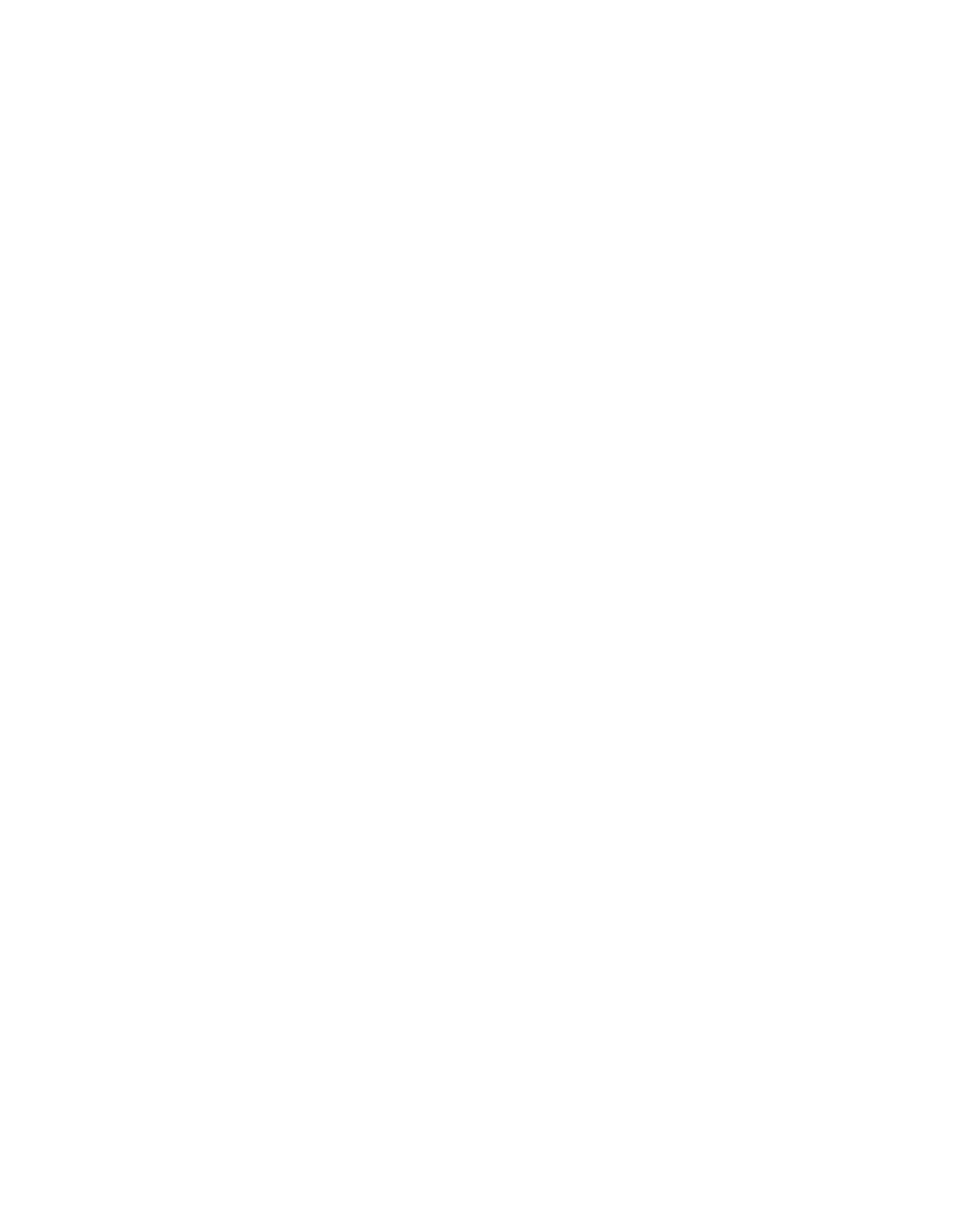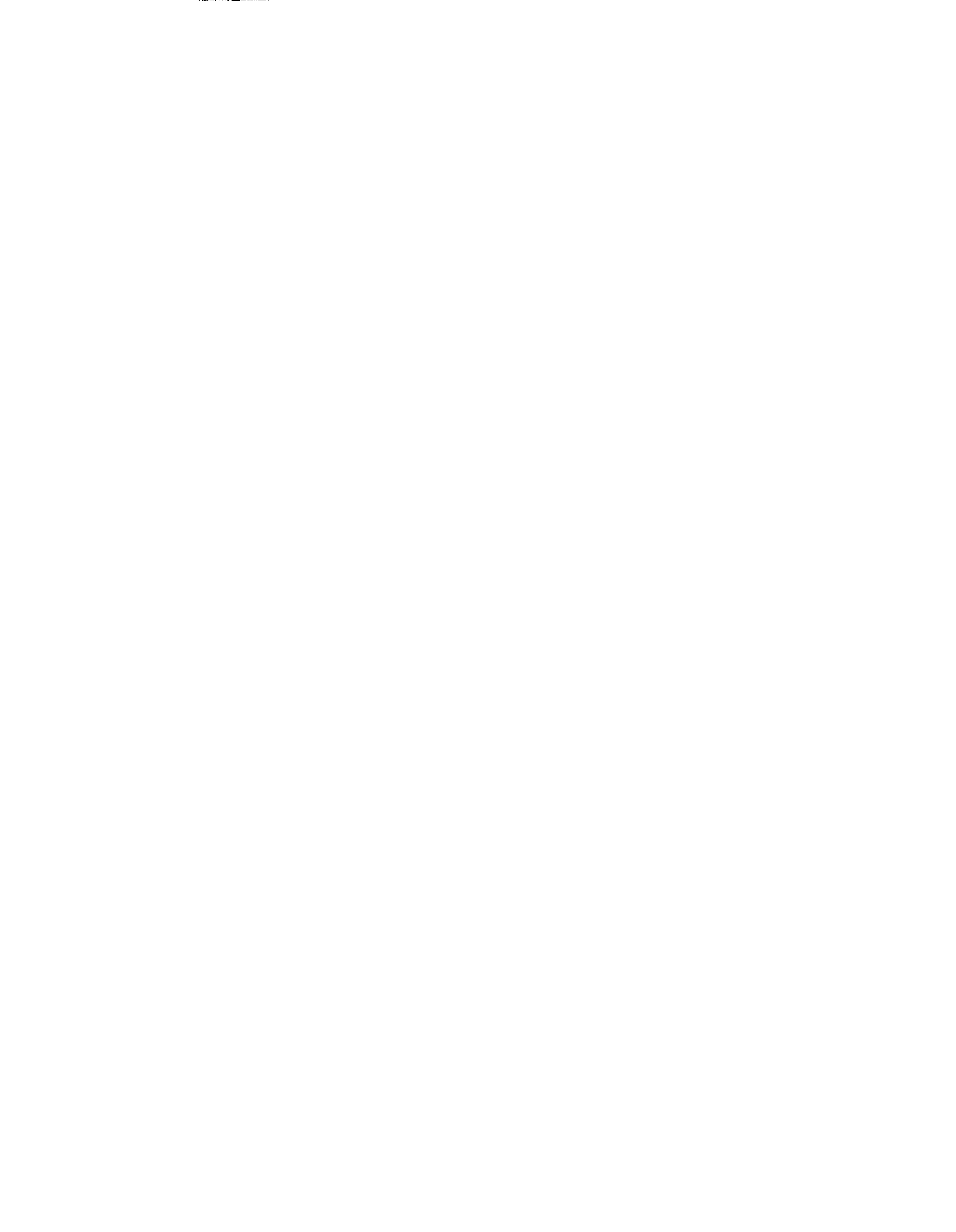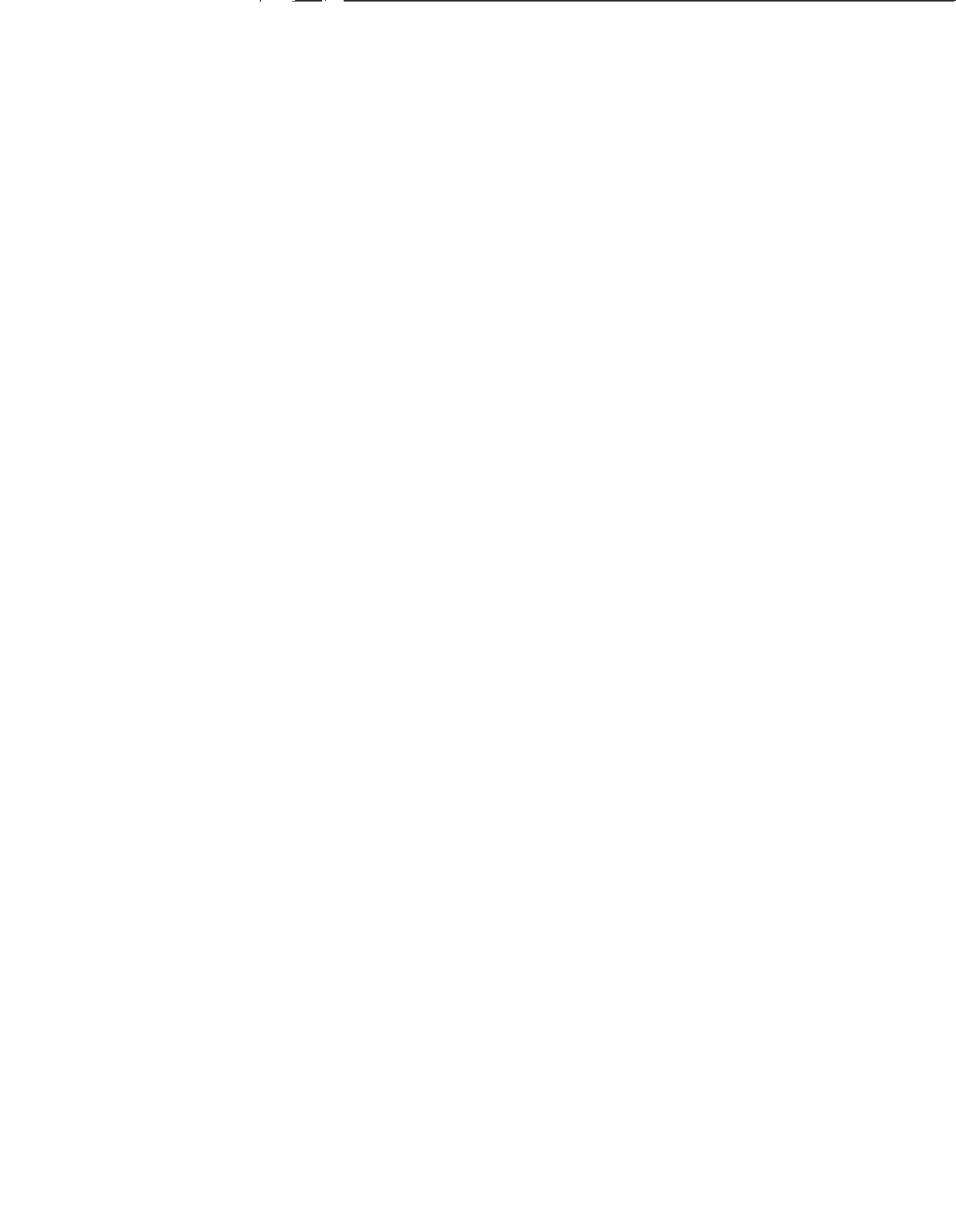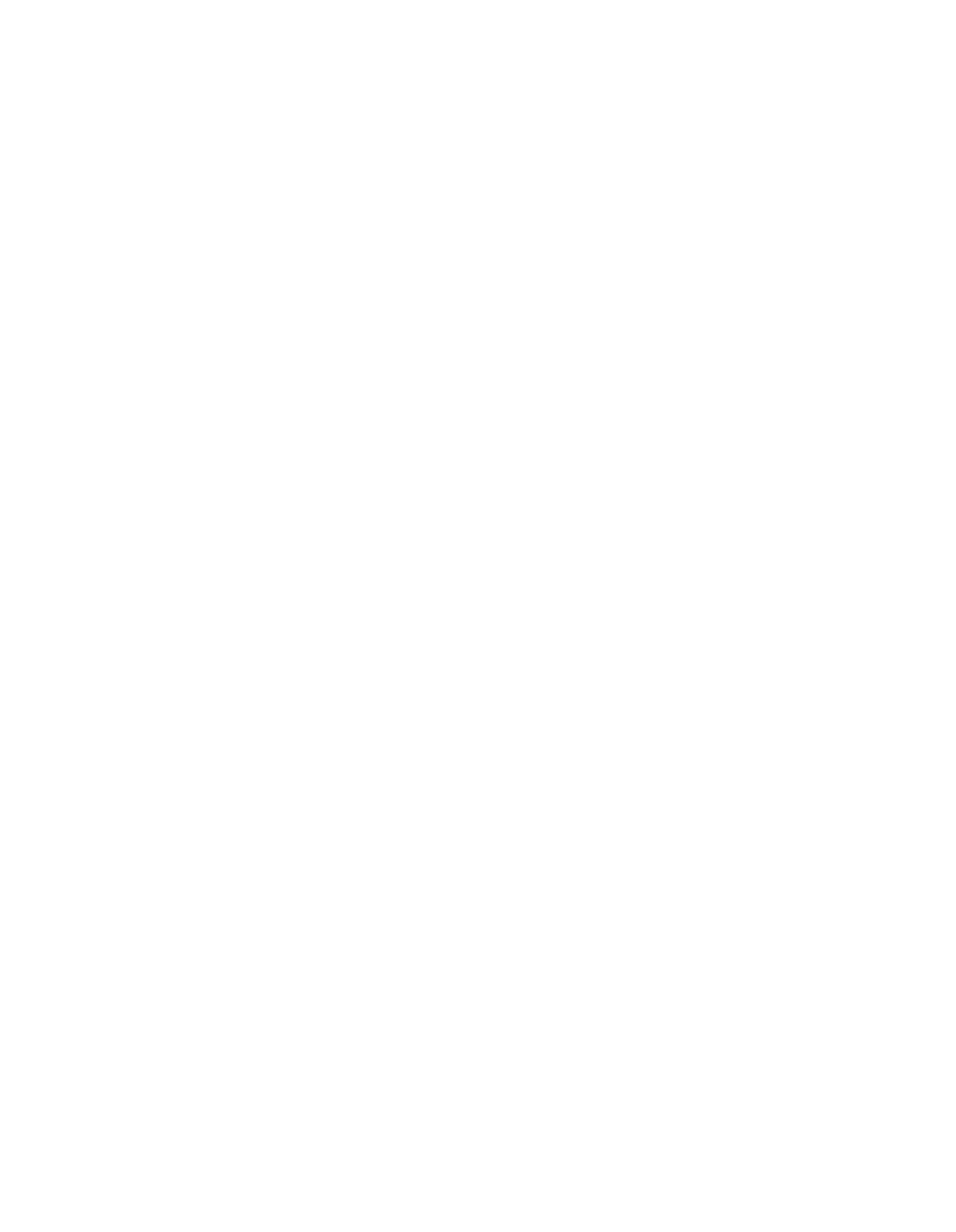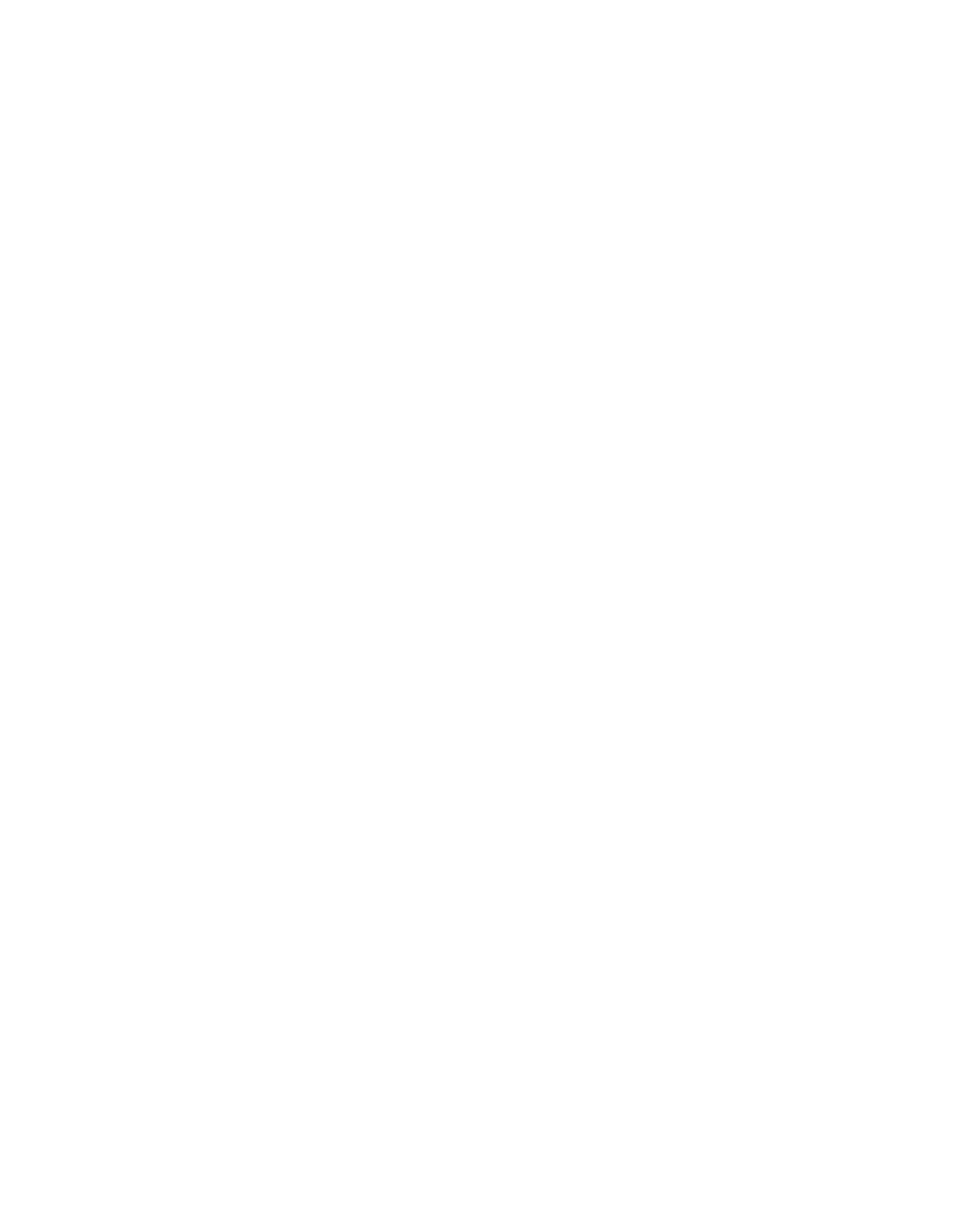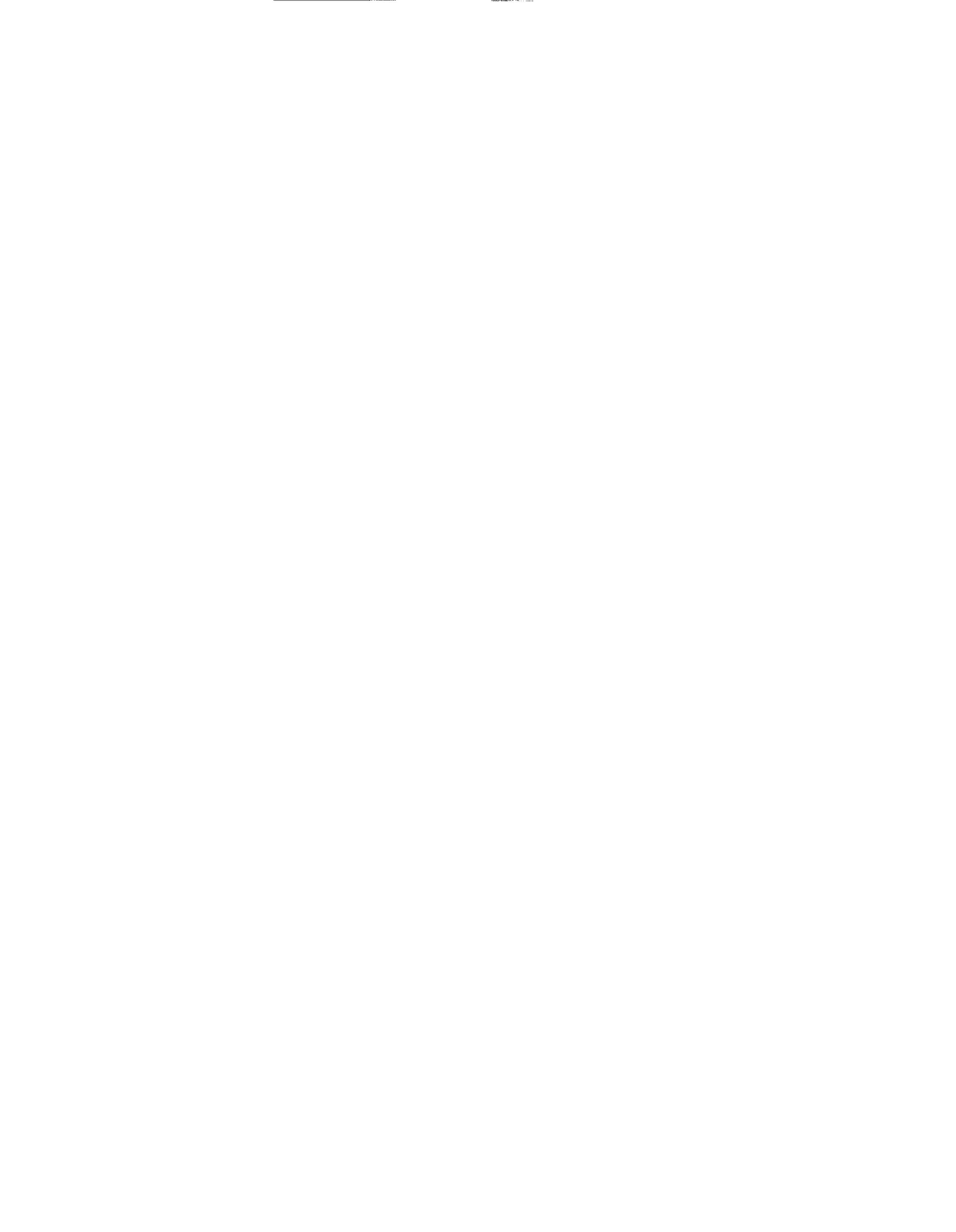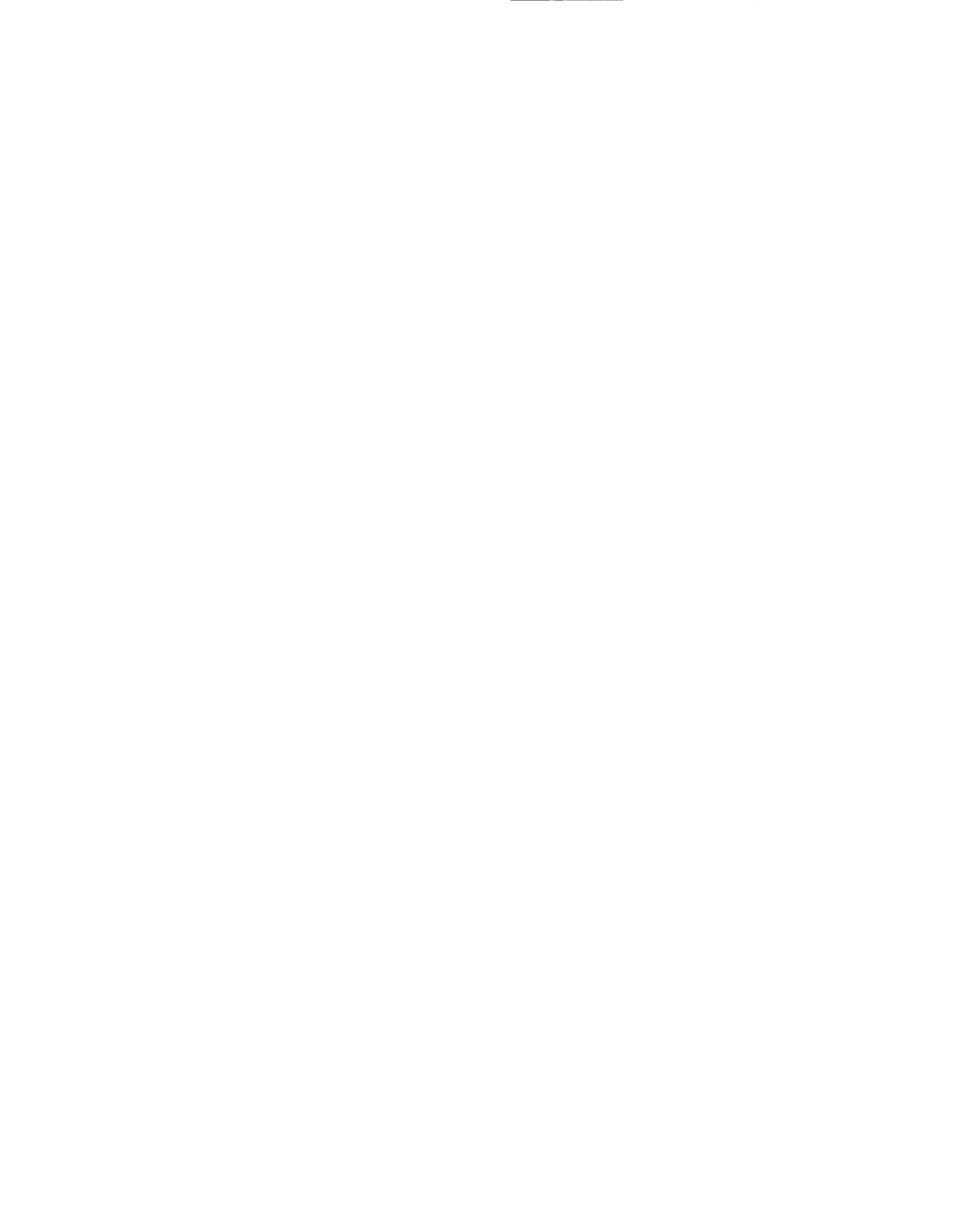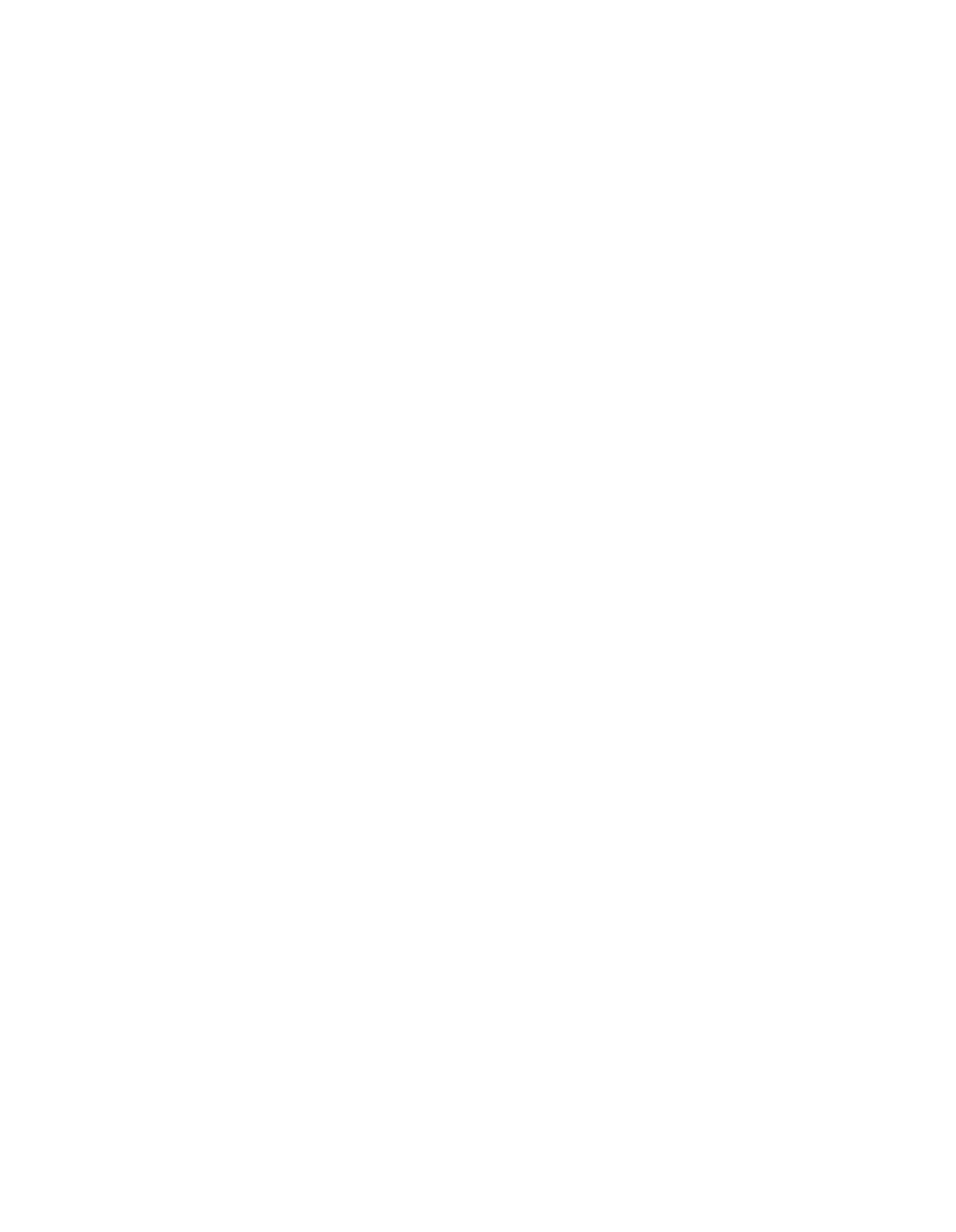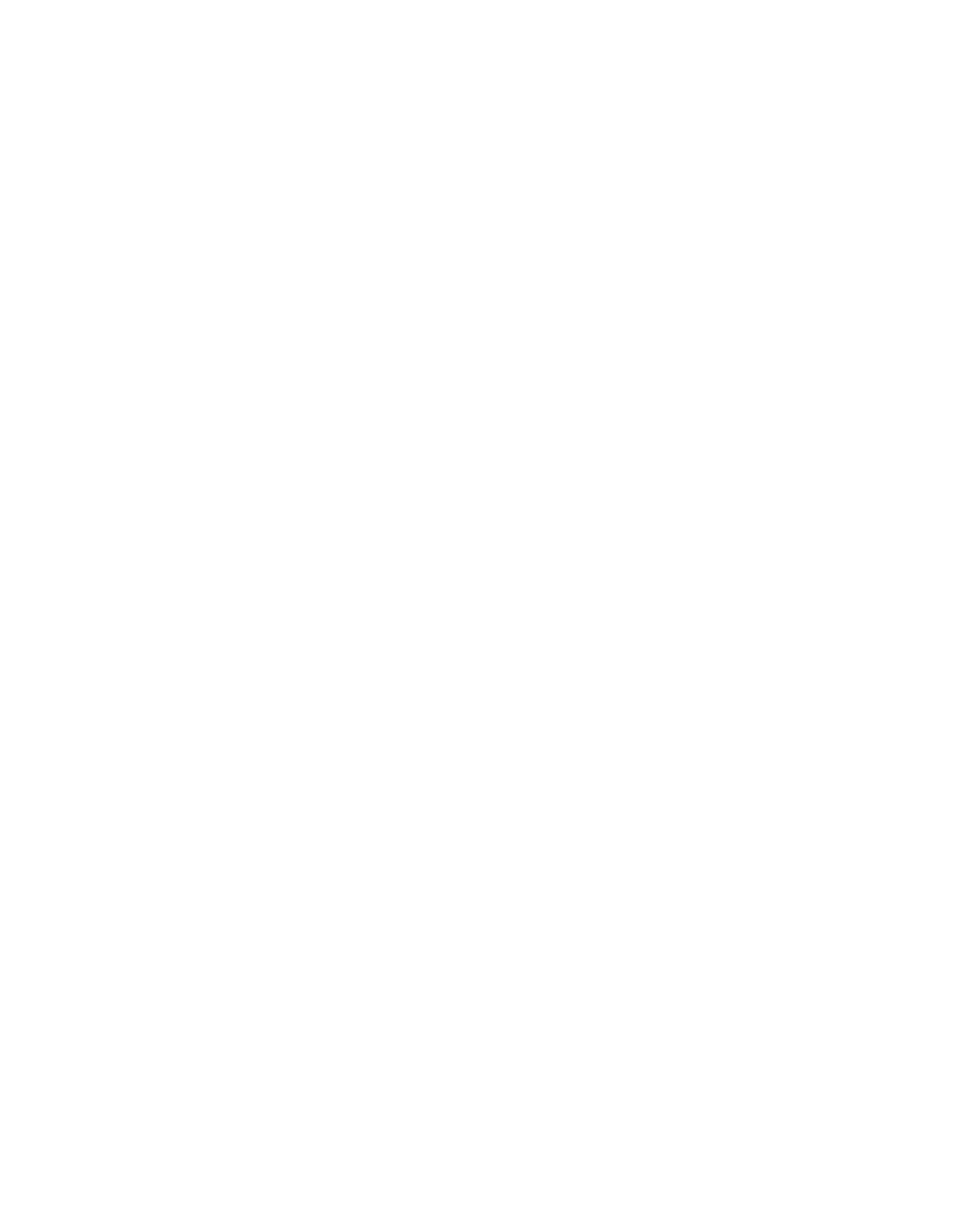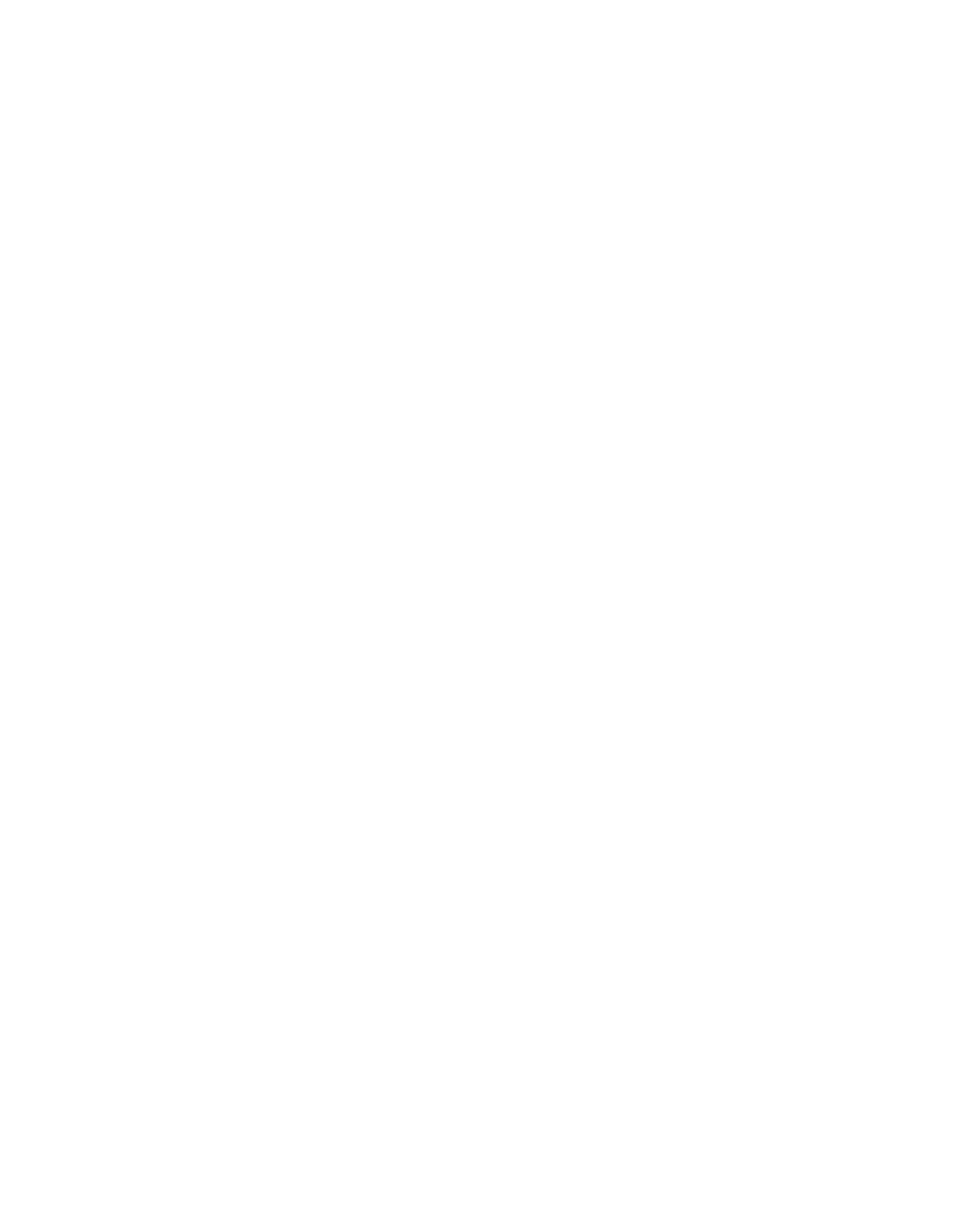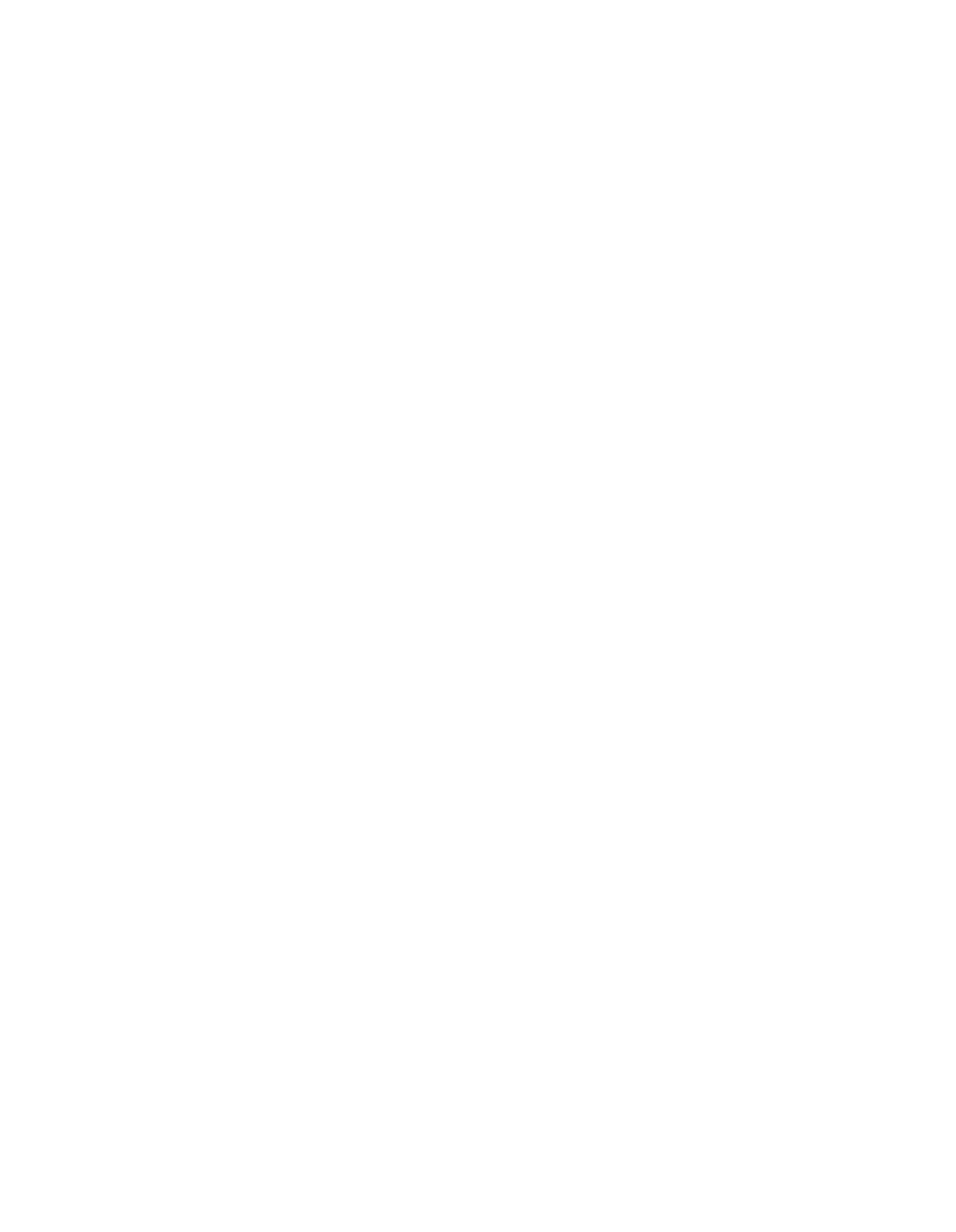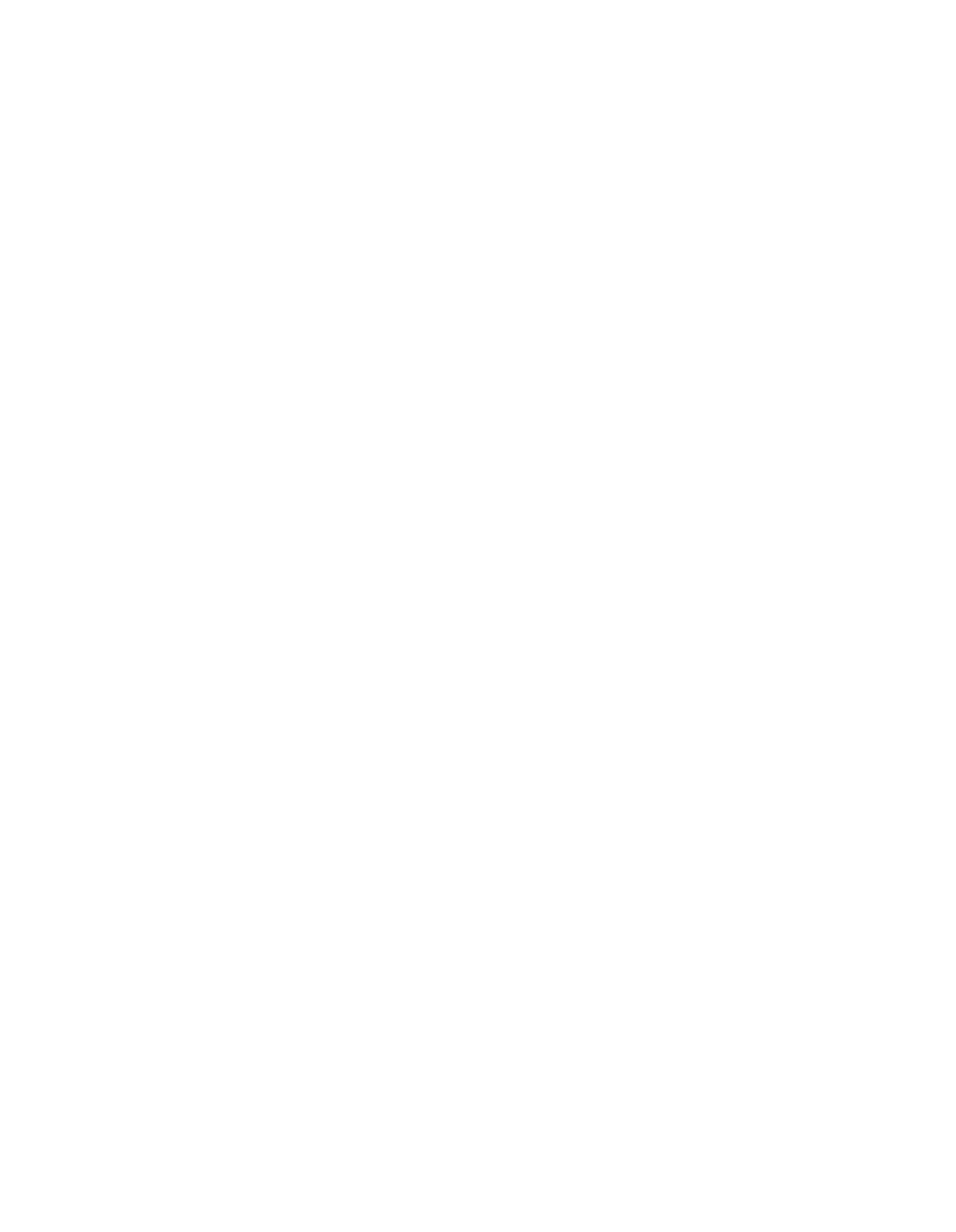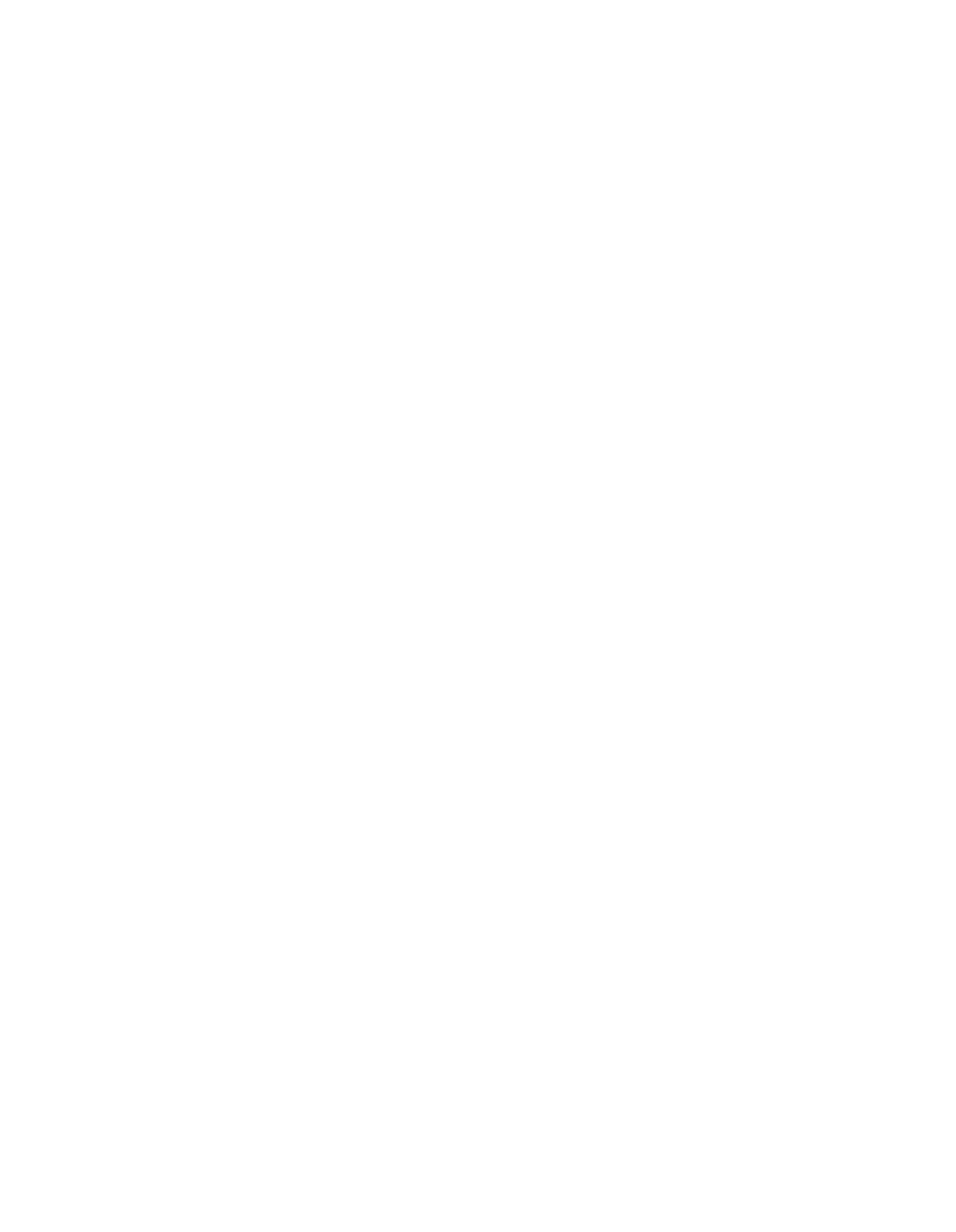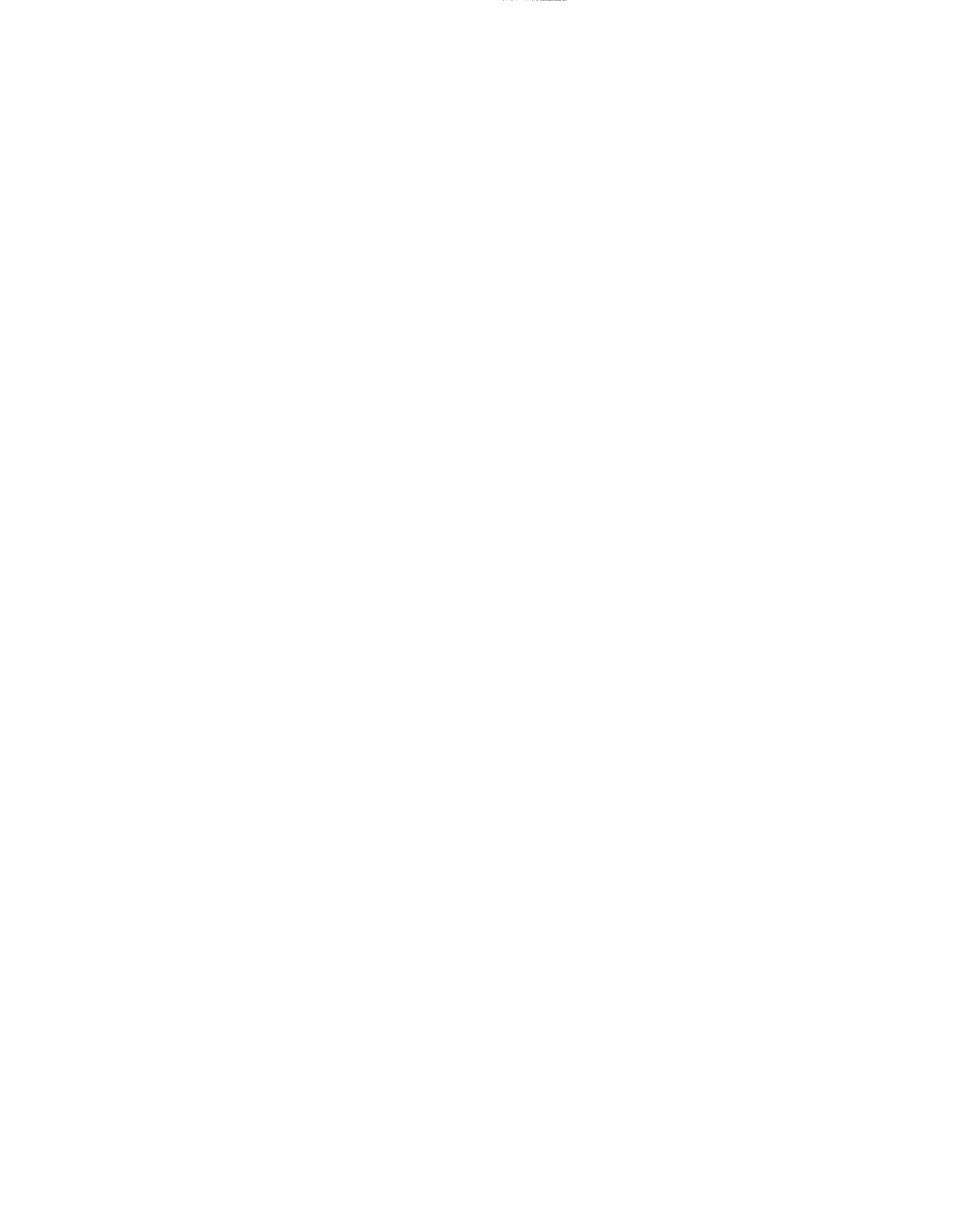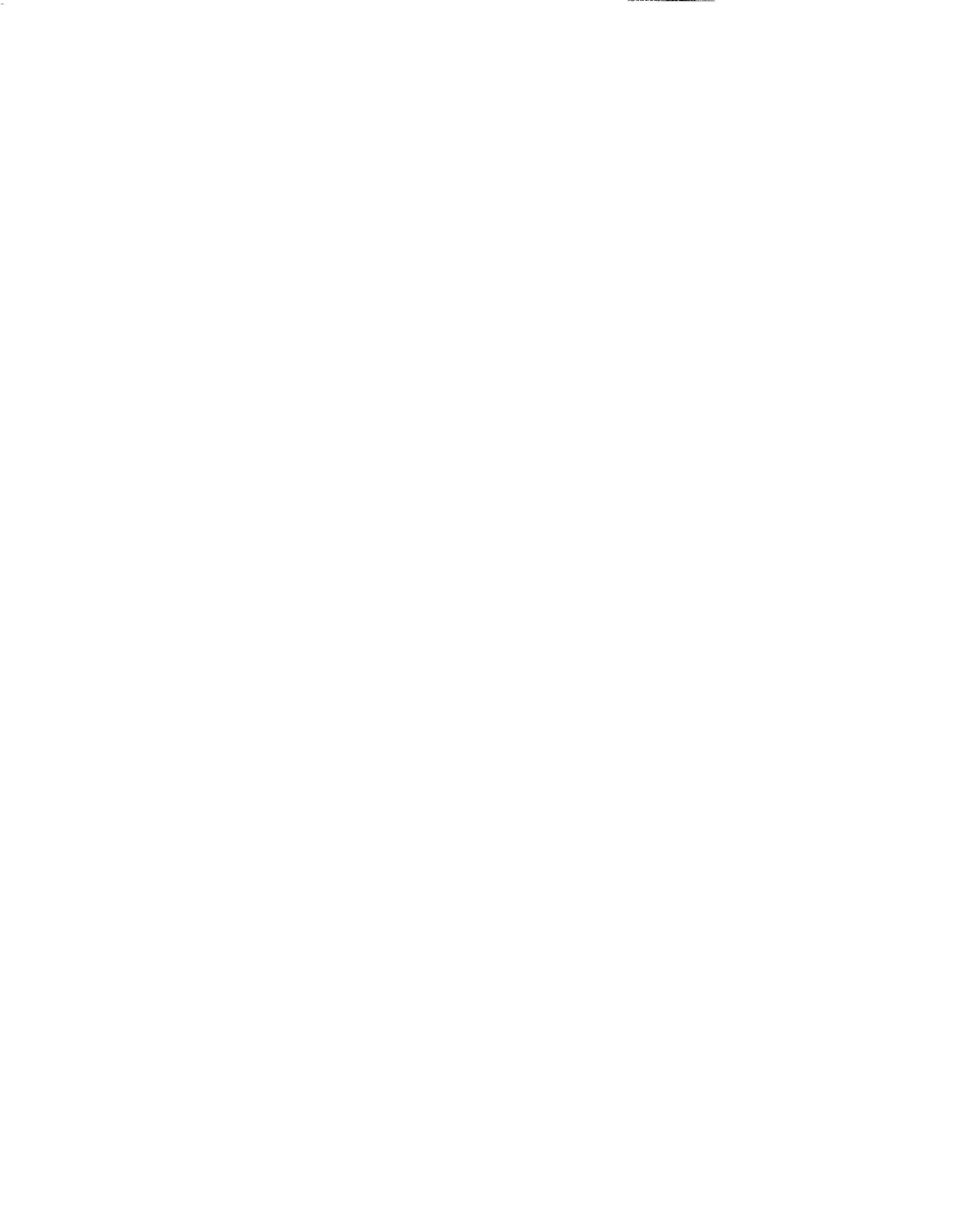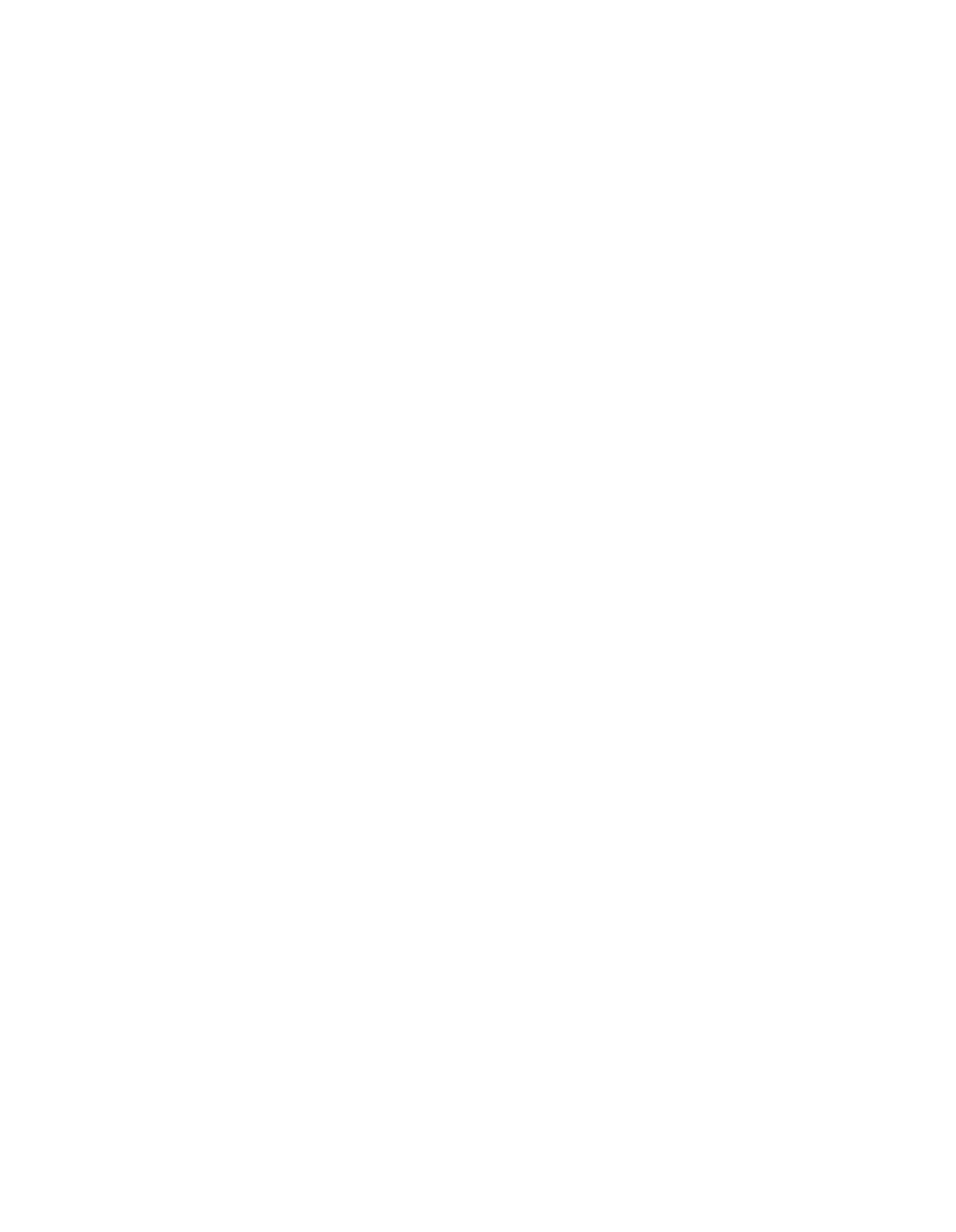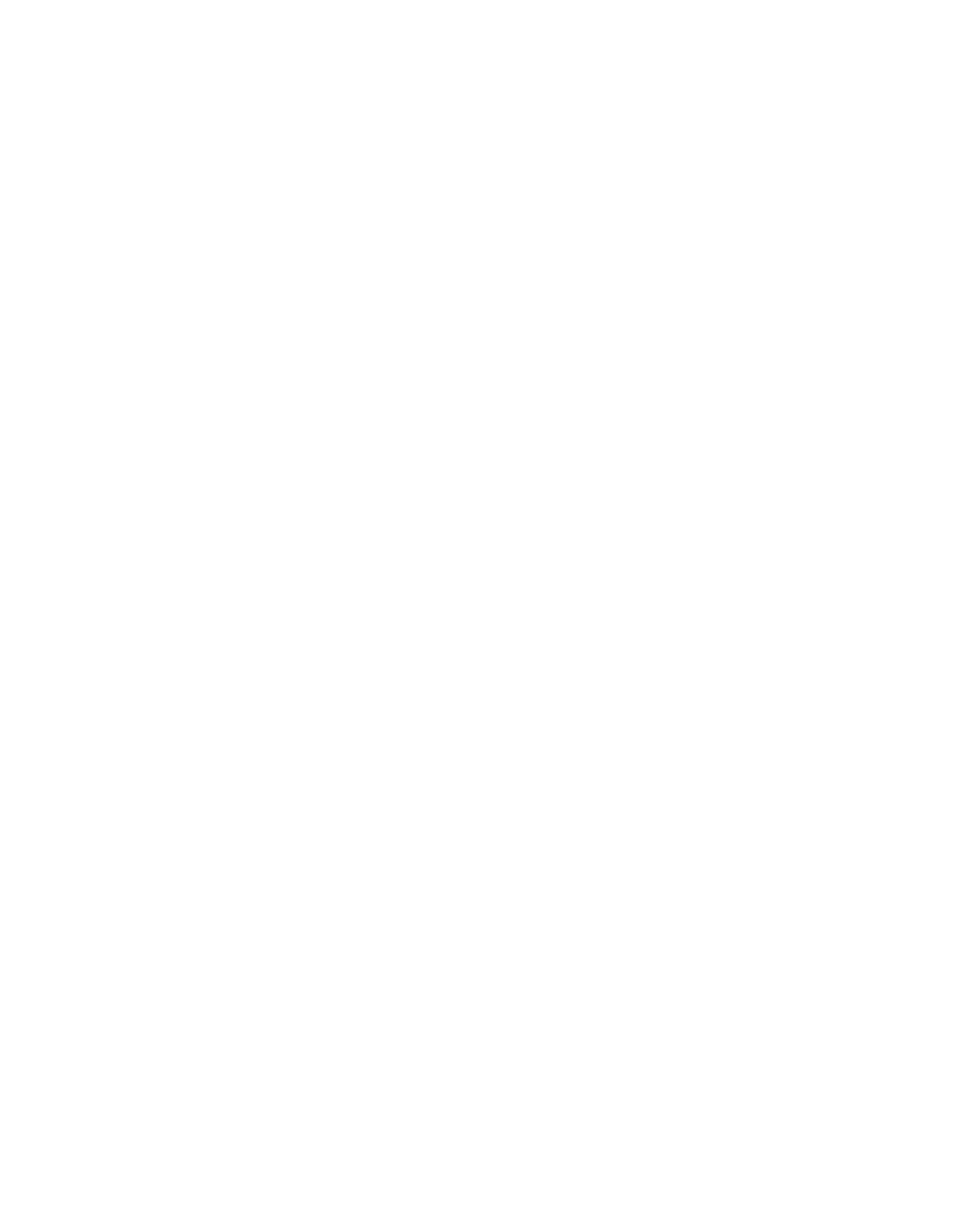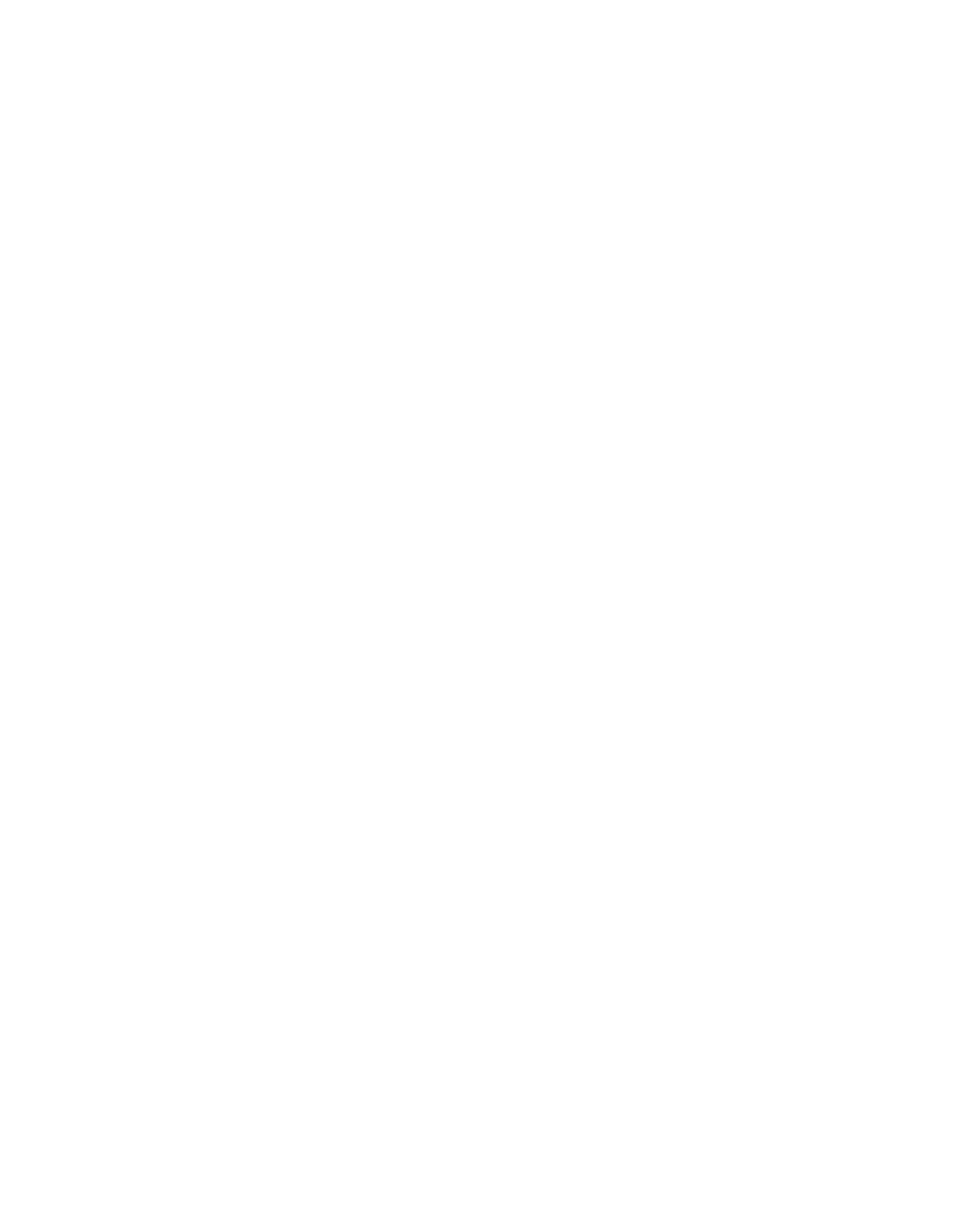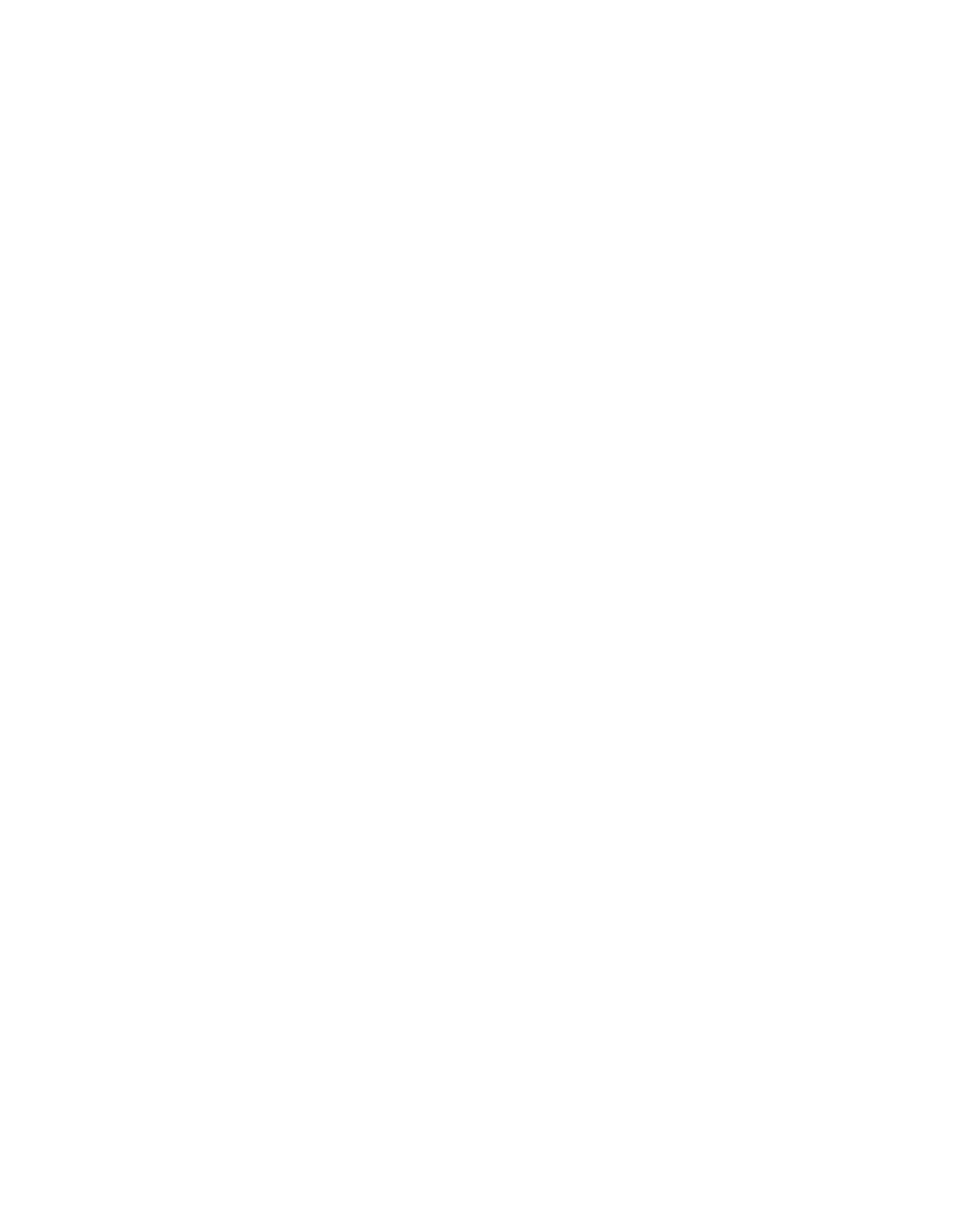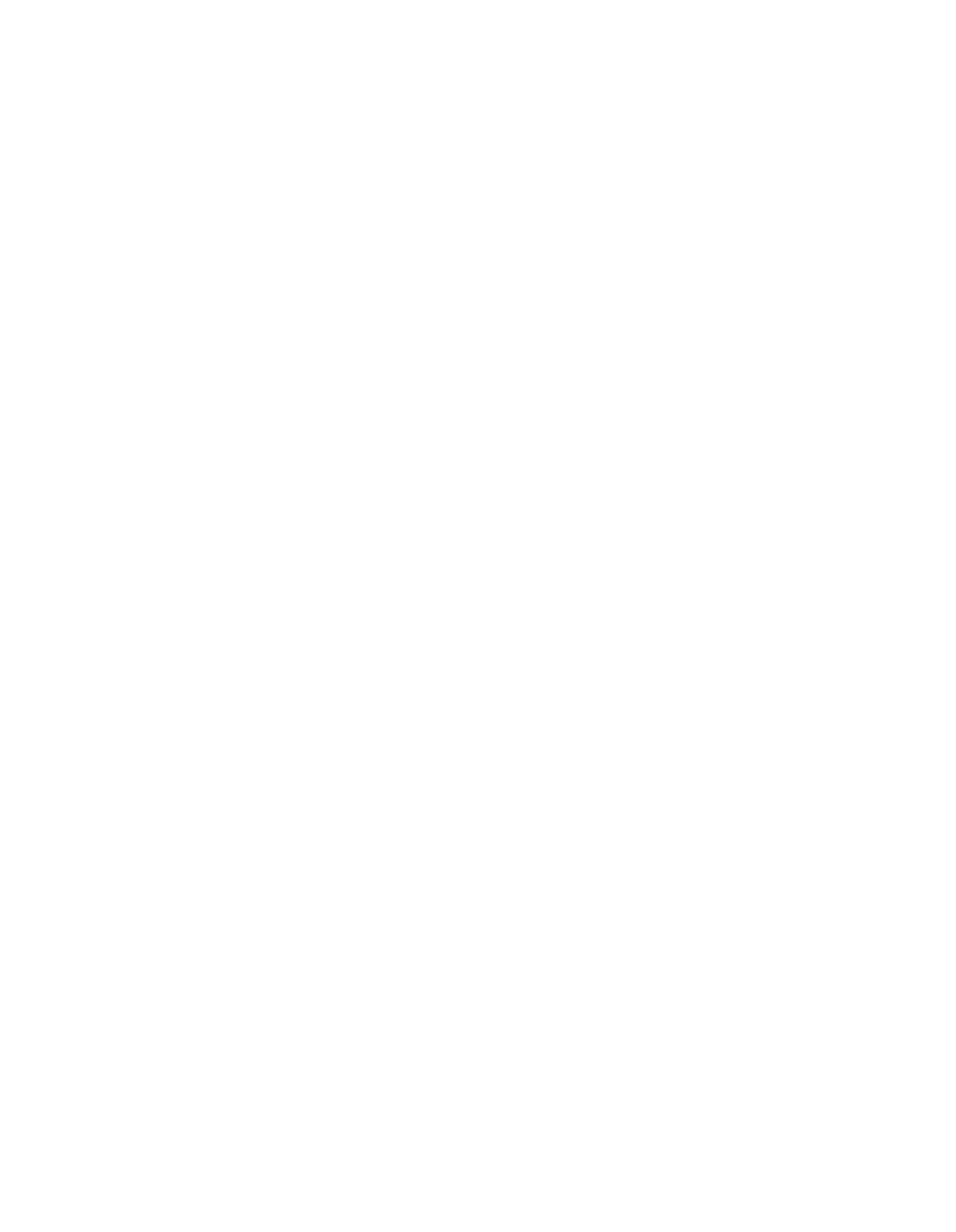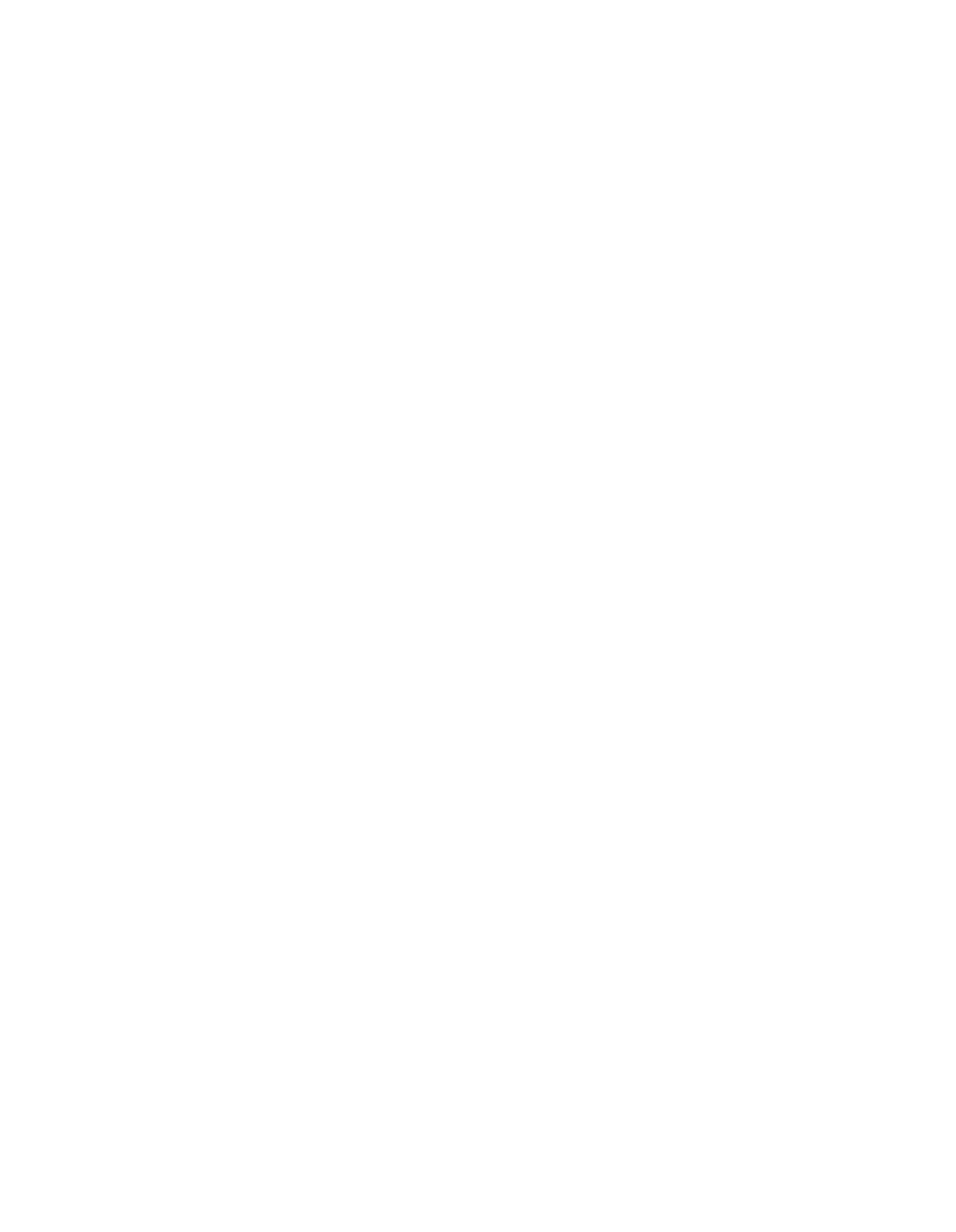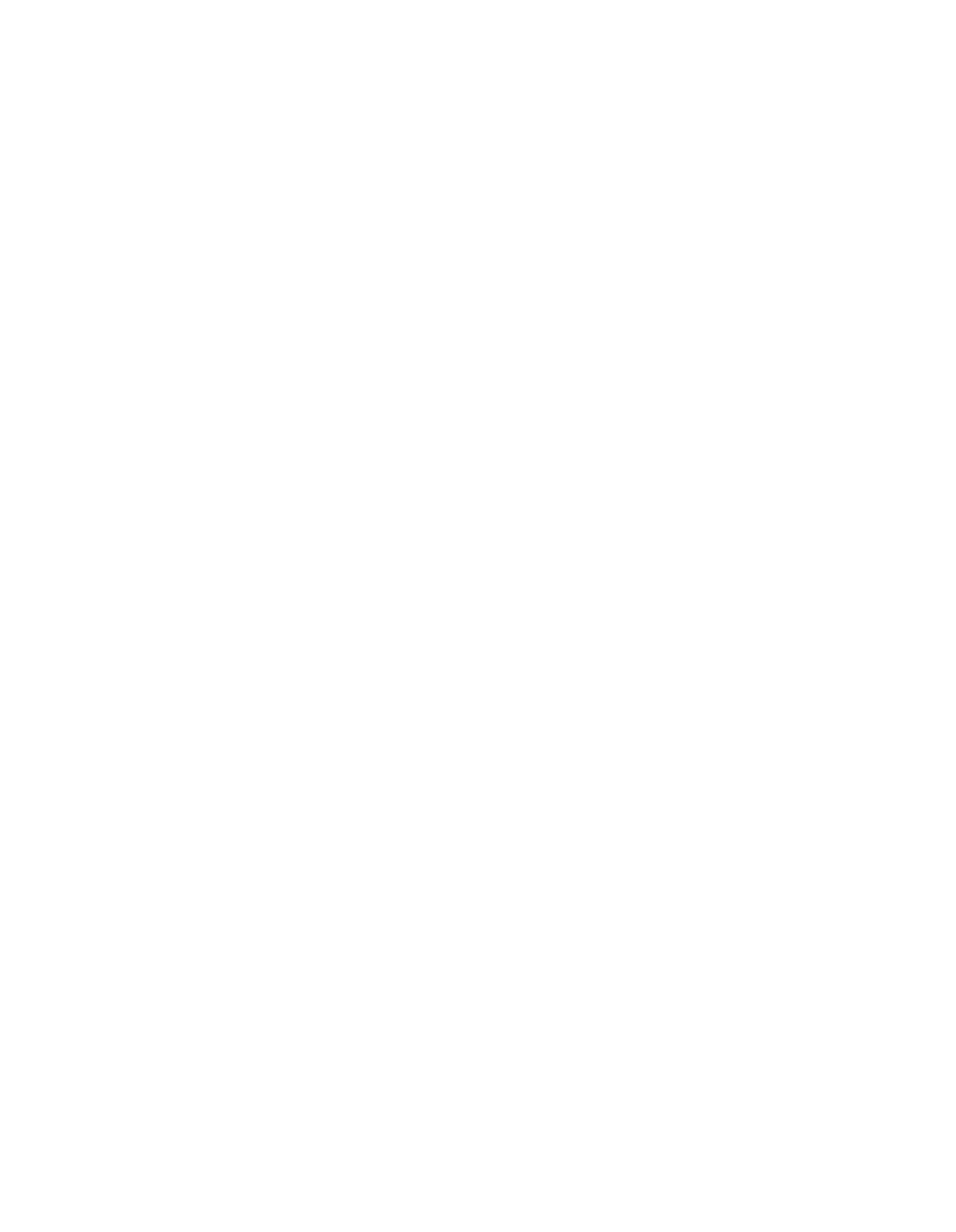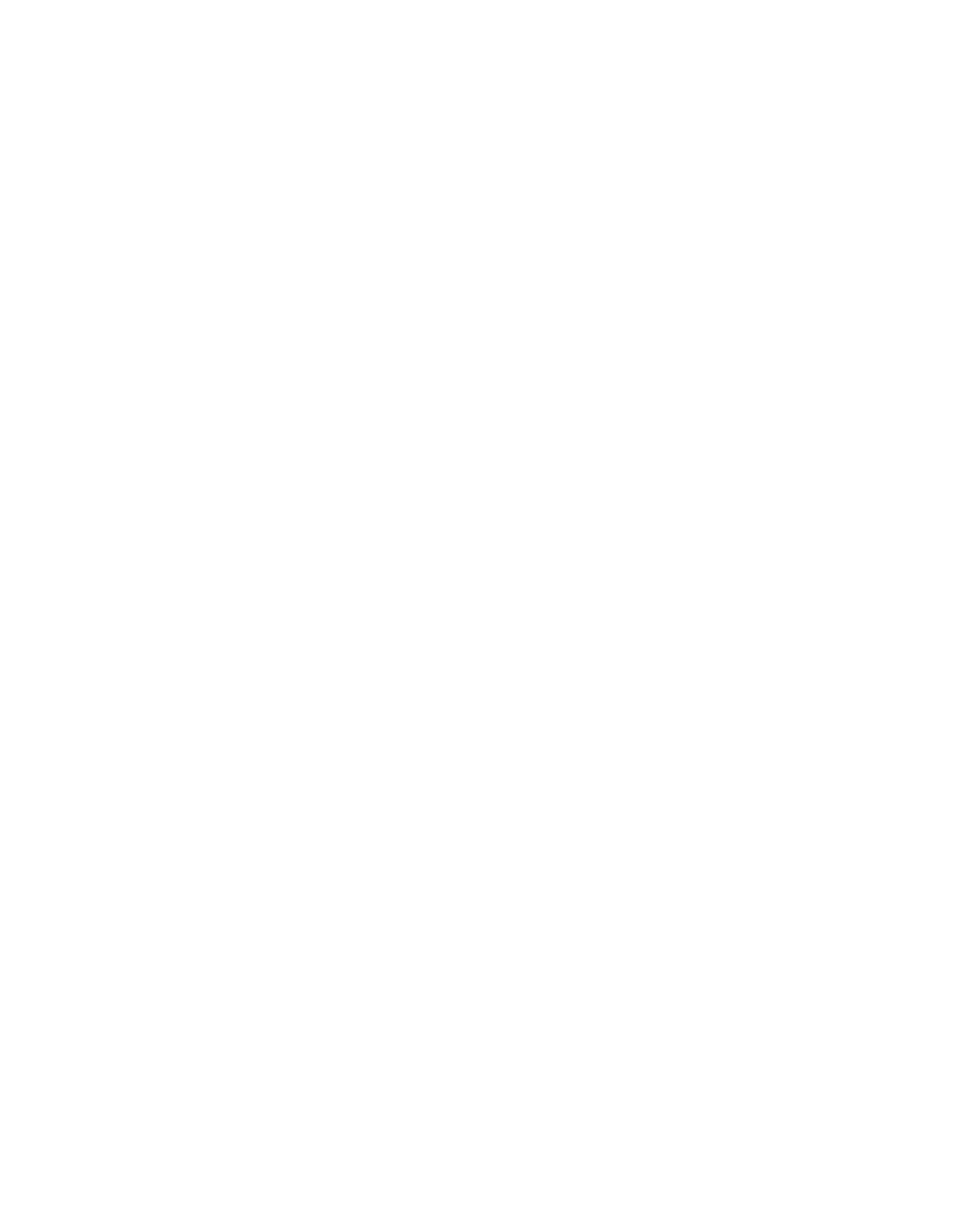SOUTHERN ILLINOIS POWER COOPERATIVE
Low Sulfur Dioxide Emission Coal Fueled Device
TO:
Dorothy Gunn, Clerk
Illinois
Pollution Control Board
State ofIllinois Center
100
W. Randolph Street, Suite 11-500
Chicago, illinois 60601
Steve Santarelli
Illinois Department ofRevenue
101
West Jefferson
P.O. Box
19033
Springfield, Illinois 62794
)
)
)
PCB~~
)
(Tax Certification)
Richard C.
Myott
Southern illinois Power Coop
11543
Lake ofEgypt Road
Marion, Illinois 62959-8500
)
)
PLEASE TAKE NOTICE that I have today filed with the Office ofthe Pollution
Control Board the APPEARANCE and RECOMMENDATION ofthe Illinois
Environmental ?rotection Agency, a copy ofwhich
is herewith seived upon the applicant
and a representative ofthe Illinois Department ofRevenue.
Date:
December 29, 2004
Respectfully submitted by,
Robb H. Layman
Special Assistant Attorney General
ILLINOIS ENVIRONMENTAL PROTECTION AGENCY
1021
North Grand Avenue East
P.O.
Box
19276
Springfield,
IL 62794-9276
Telephone: 217/782-5544
Facsimile:
217/782-9807
REC~1VED
CLERK’S OFACE
BEFORE
THE ILLINOIS POLLUTION CONTROL
BOARD
JAN
03
2005
OF THE
STATE OF ILLINOIS
STATE
OF ILLINOIS
Pollution
Control
Board
PROPERTY IDENTiFICATION NUMBER
10-26-200-002
NOTICE
REGEIV~•.
CLERK’S OFFICE
BEFORE
THE ILLINOIS POLLUTION CONTROL
BOARD
JAN
03
2O~5
OF THE
STATE OF ILLINOIS
STATE OF ILLN 015
PoIIut~onControl 6oard
SOUTHERN ILLINOIS POWER COOPERATIVE
)
Low Sulfur Dioxide Emission Coal Fueled Device
)
0~c’iI?
)
PCB~’
)
(Tax Certification)
PROPERTY IDENTIFICATION NUMBER
)
10-26-200-002
)
APPEARANCE
I
hereby
file
my
Appearance
in
this
proceeding
on
behalf
of
the
Illinois
Environmental Protection Agency.
Respectfully submitted by,
~67V4_
Robb
H.
Layman
Special Assistant Attorney General
Date:
December 29, 2004
ILLINOIS ENV~.ONMENTAL
PROTECTION AGENCY
1021
North Grand Avenue East
P.O. Box
19276
-
-
Springfield, Illinois 62794-9276
Telephone: 217/782-5544
Facsimile:
217/782-9807
CLERK’S OFFir~
-
BEFORE THE ILLINOIS POLLUTION CONTROL
BOARD
JAN
03
2005
OF THE STATE OF ILLINOIS
STATE OF ILLINOIS
PoIIut~onControl Board
SOUTHERN ILLINOIS POWER COOPERATIVE
)
Low Sulfur Dioxide Emission Coal
Fueled Device
)
PCB~W
)
(Tax Certification)
PROPERTY IDENTIFICATION NUMBER
)
10-26-200-002
)
RECOMMENDATION
NOW COMES the ILLINOIS ENVIRONMENTAL PROTECTION AGENCY
(“Illinois EPA”), through its attorneys, and pursuant to 35
III. Adm.
Code 125.204 ofthe
ILLINOIS POLUTION CONTROL BOARD’S (“Board”) procedural regulations, files
the Illinois EPA’s Recommendation in the above-referenced request for tax certification
of pollution control facilities.
In support thereof, the illinois EPA states as follows:
1.
On September 30, 2004, the Illinois EPA received a request and
supporting information from SOUTHERN ILLINOIS POWER COOPERATIVE
(“SIPC”) concerning-the proposed tax certification ofcertain air emission sources andlor
equipment located at its power plant in Williamson County, Illinois.
A copy ofthe
relevant portions ofthe application is attached hereto. Exhibit
Al.
The Illinois EPA also
received a letter on October 25, 2004, from SIPC containing supplemental information
for the application.
Exhibit
BJ.
2.
The applicant’s address is
as follows:
Southern illinois Power Cooperative
11543 LakeofEgyptRoad
-
Marion, Illinois
62959-8500
—
3.
The subject matter of this request consists ofthe recognition of a new
circulating fluidized bed (“CFB”) boiler as a “low sulfur dioxide emission coal fueled
device” as defined by statute.
The CFB boiler does not require downstream
flue gas
desulfurization because the sulfur dioxide is captured by limestone that is utilized as part
of the fluidized bed.
The equipment may therefore be considered a low sulfur dioxide
emission device as the CFB boiler will be used to convert locally available coal ma
manner that eliminates the need for any additional sulfur abatement measures otherwise
required under state or federal
laws and regulations.
4.
Section
11-40 ofthe Property Tax Code, 35 ILCS 200/11-40
(2002),
defines “low sulfur dioxide emission coal fueled devices” as:
“any device used or intended
for the purpose ofburning, combusting or
converting locally available coal
in a manner which eliminates or
significantly reduces the need for additional sulfur abatement
that would
otherwise be required under State or Federal air emission standards.”
The word “device” is also defined in the same provision to include:
“all machinery, equipment, structures and all related apparatus, including
coal feeding equipment, ofa coal gasification facility designed to convert
locally available coal into a low sulfur gaseous fuel and to manage all
waste and b.y-product streams.”
5.
As with pollution control facilities, low sulfur dioxide emission coal
fueled devices are entitled to preferential tax treatment, as provided by 35 ILCS 200/11-
35
(2002).
6.
Based on information in the application,
it is the Illinois
EPA’s
engineeringjudgment that the described project andlor equipment may be considered
a
“low sulfur dioxide emission coal fueled device” in accordance with the statutory
definition and consistent with the Board’s regulations at 35
Ill
Adm
Code
125
200
7.
Because the CFB boiler identiflea in SIPC’s application satisfies the
aforementioned criteria, the Illinois EPA recommends that the Board issue the applicant’s
requested tax certification.
Respectfully submitted by,
ILLINOIS ENVIRONMENTAL PROTECTION
AGENCY
Robb
H. Layman
Special Assistant Attorney General
DATED:
December 29, 2004
ILLINOIS ENVIRONMENTAL PROTECTION AGENCY
1021 North Grand Avenue East
P.O. Box
19276
Springfield,
Illinois 62794-9276
Telephone: 217/782-5544
Facsimile:
217/782-9807
THIS FILNG
IS
SUBMIUED
ON RECYCLED PAPER
—_
CERTIFICATE
OFSERVI
-
I hereby certify that on the
29th
day ofDecember, 2004,I&
j~yFirstClass
Mail, with postage thereon fullypaid and deposited into the possession ofthe United
States Postal Service, one (1) original and nine
(9)
copies ofthe following instruments
entitled
NOTICE,
APPEARANCE and RECOMMENDATION to:
Dorothy Gunn, Clerk
Illinois Pollution Control Board
100 West Randolph Street
Suite 11-500
Chicago, Illinois
60601
and a true and
correct copy ofthe same foregoing instruments, by First Class Mail.with
postage thereon fullypaid and deposited into the possession ofthe United States Postal
Service, to:
-
Steve Santarelli
Richard C. Myott
Illinois Department ofRevenue
Southern Illinois Power Coop
101
West Jefferson
11543
Lake ofEgypt Road
P.O. Box
19033
Marion, Illinois
62959-8500
Springfield, Illinois 62794
By: Robb H. Layman
Special Assistant Attorney General
This filing is submitted on recycled paper.
MAYER
BROWN
ROWE
&
M
A
W
September 29, 2004
VIA
UPS
Mr. Donald B. Sutton, P.E.
Permit Manager/Permit
Section
Division ofAir Pollution Control
Illinois Environmental Protection Agency
1021 North Grand
Avenue East
Springfield, IL 62702
Re:
Southern illinois Power Cooperative
Application for Certification ofCirculating
Fluidized Bed Boiler
Dear Mr. Sutton:
Mayer, Brown,
Rowe & Maw LLP
190 South La Salle Street
Chicago, Illinois 60603-3441
Main Tel (312) 782-0600
Main Fax (312) 701-7711
w~w.mayerbrownro~.com
Patrick J.
McNemey
Direct Tel (312)
701-7609
Direct Fax (312)
706-8747
Enclosed please find
Southern
Illinois Power Cooperative’s Application for certification
of its newly installed Circulating Fluidized Bed Boiler.
Please cause your staff to review the
enclosedApplication and
call me if you need
any additional documentation.
Thank you.
cc:
Ms.
Angela L. Desmond
Verytruly yours,
RECEIVED
SEP
3
0
2flP4
-
IEPA
-
DAPC
-
SPFLD’
—
/4
Brussels
Charlotte
Chicago
Cologne
Frankfurt
Houston
London
Los Angeles
Manchester
New York
Palo Alto
Paris Washington, D.C.
Independent Mexico City Couespondent
Jauregul, Navarrete, Nader y
Rojas,
S.C.
PJM:mg
Enclosures
Mayer, Brown, Rowe & Maw LLP operates in combination with our assoctated English limited liability partnership in the offices listed above.
T~u
~ert~ñcanon Jo,- Po1hitio~,
Conin,!
Facilities
Page
1
of2
glon
This
Agency
is
authorized
to
request
this
infbrm~ion
tmder Illinois Revised Statues,
1979,
Chapter,
120,
Section 502a.5.
Disciosece
oIthis
infoemation is voluntary.
Howcvet~~ilure
to
comply
could
~eveat your
application
from
being processed
or
could result in dcnial
of your
applicatiat
for atti&atim.
APPUCATION FOR CER11FICA11ON (PROPERTY
TAX TREATMENT)
POLLUflO~
CONTROL FACILI1Y
AIR
2’
WATER
0
IWNOIS
ENViRONMENTAL
PROTECflON AGENCY
P.O. Box
19276, Sprfr~gfl.Id,
IL
62794-9276
FOR
AGENCY USa
File No.
Date Recthed
Certification
No.
Date
Sec. A
,~
~
.
~
•
Company Name
Southern Illinois Power Cooperative
-
PersonAuthorized toReceiveCertification
Person
toContact for Additional Details
Mr. Richard
C. Myott
Ms. Angela Desmond
SlreetAddress
11~43Lak8~EgyptRoad,
S~reet.~1dm~S~
~ i~ewa~erhouseCoopers
LI
Munictpahty,
State& ZipCode
Munictpality,State & Zip
Cede
Marion,
IL 62959—8500
Chicago,
IL 60606
Telephone
Number
Telephone Number
(618)
964-~1448
(312)
298—4116
-
-
Location
of Facility
Municipality
Township
Quarter
Section
Township
Range
26
105
2E
Marion
Street Address
County
Book
Number
11543
Lake of Egypt
Rd.
Williamson
Property
Identification
Number
Parcel
Number
-
10—26—200—002
Sec. B
C,
~ei
~
~i
.c~
~
~o
•
Nature of
Operations
Conducted atthe Above Location
Southern Illinois Power Cooperative
(“SIPC”) generates electricity through
the process of carbon combustion.
-.
-
.
Waler Pollution Control
Construction
Permit No.
.
Date Issued
NPDESPERMIT
No.
1RL106090
(See
Exhibit A attached)
Date
Issued
Expiation Date
~March12,
2001
July
25,
2003
Air Pollution
Control Construction
Permit
No.
Date Issued
*.~olIution
Control Operating
Permit
No~
00070028,
00070029,
00070030
Date Issued
-
May
16,
2001
and June
15,
2001
Sec.C
~
~
~
~
~
~°
~
DescribeUnitProcessSlpC
was formerly comprised of four-solid fuel coal fired
generating units.
It has replaced coal fired Units
1—3 with
.a new
circulating fluidized bed boiler
(“CFB”).
The
CPu
is designed
to use coal
refuse, which is low Btu, high ash fuel,
as its main fuel.
It produces
enough steam to serve three existing steam turbines with a total nominal
generating capacity of
120 MW
(gross).
(See CFB Schematic. attached- as Exhib
Materials Used
in
Process
.
Coal, coal refuse, petroleum coke, wood chips,
tire derived fuel,
Limestone and ammonia.
Sec.0
~
~
u~
zu,
00
,_
~
~
~
U.
Describe
Pollution
Abatement
Control Facility
See narrative description of
CFB attached as Exhibit C and copy of
~ay 16,
2001 IEPA Construction Permit attac-hed as Exhibit D.
.
-
S
-
~
t
B)
IL 532-0222
APC 151
(Rev.
8/00)
l1~~~I
V ~
SEP
30
?fl04
-
~EPA
-
DAPC
-
SPFLD
Sec. E
(1) Nature of Contaminants or Pollutants
a,
z
‘C
I-
z
iO
Tax
Cart
j/kalionfor Poilugie,n C~~ur,’I
Facilities
Page
2 of
-,
5/Of)
Material
Retained,
Captured
or
Recovered
Contaminant or Pollutant
DESCRIPTION
DISPOSAlOR USE
See copy of May
16,
2001IEPA
construction permit for
CFB
S
-
attached hereto as Exhibit D
(2) Point(s)
of
Waste Water
Discharge
Plans and
Specifications Attached
Yes
~
No
.@i..
Are
contaminants
(or residues)
collected
by
the control facility?
I
Yes
I
No
(4)
(5)
Date installation completed 12/200’3
status of installation on date of application Complet.g,4_.._
a.
FAIR CASH VALUE IF CONSIDERED REAL PROPERTY:
$
110,000
,
ooo.L’
b.
NET SALVAGE VALUE IF CONSIDERED REAL PROPERTY:
$
0
c.
PRODUCTIVE GROSS ANNUAL INCOME OF CONTROL FACILITY:
$
d.
PRODUCTIVE NETANNUAL INCOME OF CONTROL FACILITY:
$
e.
PERCENTAGE CONTROL
FACILITY BEARS
TOWHOLEFACILITY VALUE:
75
Sec. F
‘T~following
information is submitted in accordancewith the
Illinois Property Tax
Code, as
amended, and to the best of my
knowledge, is true and
correct.
The facilities claimed herein are
~polIution
control fadhties
as defined in Section 11.10 of the
Illinois Property Tax
.
-
.
-
~
Signature
Title
INSTRUCTIONS
FOR COMPIUNG AND FlUNG APPLICATION
Sec.
G
General:
Separate applications must be completed
for each control
facilIty claimed. Do not mix types (water and air).
Where both air
and
water operations are related. file twoapp~cations.If attachments
are needed, record
them consecutively on an
index sheet
Sec. A
Information refers to applicant as listed in the tax records
and the person to be contacted for further details or for rnspection of
facilities.
Define facility location by
street address or legal desaiption~A plat map location
is
reqi*ed for facilities located
S
outside of municipal boundaries._The property ideritifoation number is requ Wed.
Sec. B
Seif-explanatoty.
Sttnit copies ofal pemiitsIssued by local polulion
control agencies.
(e.g.MSD Constniction
Pemilt)
Sec. C
Refers to manufacturing processes or
materials onwlich pollution control fadlityis used.
sec.
0
Nanatlve description ofthe pollution control
facility, indicating that
its primary purpose is to eliminate,
preventor reduce pollution.
Slate the type of control facility.
State permitnumber,
date, and agency issuing permit
A narrative description and a process
flow diagram describing the oolution control fadllltv. ki~jde
a listing of each major piece ofequipotent included
m
the claimed
fa~
cash value for realproperty.
Include an averace analysisofthe influent and eftkient of the control facilitystating the
a,
collection efficiency.
Sec.
E
List air
contaminants, orwater pollution substancesreleased as effluents to the manufactising processes.
List also the
final
P
~
~
dIsposal
of any contaminants removed from the manufacturing processes.
Item (1)- Refers to polkitants and conbminants
removed
from the process by the pollution control facility.
Item (2)
-
Refers
to water pollution but can
apply towater’camed wastes from air pollutioncontrol facilities.
Submit drawings,
wtiithclearly show (a) Point(s) of discharge to receiving
stream,
and(b)
Sewers
and process piping to and
from the control
-
—
Sec. F
facility.
Item(3)—Itthe collected contaminantsare disposedof
other than as wastes,
state
the dispositionofthe materials, and the value
in dollars reclaimed by sale or reuse of
the colleratd substances. State the cost ofreclamationand related
expense.
Item
(4)-
State the date which the pollution control facety
was
first placed in service and operated.
If not, explain.
Item
(5)- This information is essential to the certification and assessment actions.
This accotxilrng datamust be completed
to
activate project review
prior to certification
bythis Agency.
Self-explanatory.
Signature
must bea corporate authorized signature.
-
-
Submit to:
Attention:
Attentiort
Ikds
EPA
Thomas McSwiggin
-
Donald E. Sutton
-
P.O. Box
19276
Permit
Section
Permit Section
-
Springfield.
IL
62794-9276
Division of Water Pollution Conrot
Division of
Air
Pollution Control
1/ Completion of this section
is not an acknowledgement that this property
constitutes real property for ad valorem property
tax
purposes.
-
-
Exhibit
C
Section D
-
Describe Pollution Abatement Control Facility
The principle ofthe circulating fluidized bed system
can
be explained by examining the
relationship between differential pressure
and
superficial gas
velocity for a bed ofparticles. For a
fixed bed, the log of differential pressure is
approximately proportional to the log of
gas
velocity.
As the
gas
velocity increases beyond the minimum fluidization velocity, the particles begin to
expand
and
become fluidized, and a distinct bed level is visible in the fluid bed. The differential
pressure remains
almost constant until the bed material
begins
to
elutriate (lift and
separate) at
the entrainment velocity ofa bubbling bed. The degree of turbulent mixing continues to increase
between the
minimum and
the entrainment velocity. Beyond the entrainment velocity, the
particles are carried
out ofthe combustor, and a continuous process is maintained by circulating
the
same amount
ofparticles to the bottom ofthe reactor. The entrainment velocity marks the
transition
from a bubbling bed to a circulating bed. Beyond
this
velocity, the differential pressure
becomes a function ofvelocity
and
solid recirculating rate.
The CFB system operates in the
region between that ofa bubbling fluidized bed
and
that of a circulating fluidized bed until
normal bed temperatures
are obtained,
air
flow is above minimum, and the entrainment velocity
is reached. From that point the
unit
operates as a circulating fluidized bed.
This
fluidization
pattern is characterized by high turbulence, solids.back-mixing,
and
the absence of a defined bed
level. The entrained bed material, with an average size in the
range of 100 to 300 microns,
-
(talcum powder) is
separatedby a cyclone and
returned
to thebed via a non-mechanical loop
seal. Fuel is
fed into the lower combustion chamber, and
primary air
is introduced
through a
lower
grid.
Because ofthe
turbulence in the circulating bed, the fuel mixes quickly and
-
-
uniformly with the bed material. Although there is no definite fixed bed depth, the density ofthe
bed
varies throughout
the system, with the highest density at the level where the fuel is
introduced.
Secondary air is introduced to:
•
Ensure solids circulation;
•
Provide staged combustion for NOx reduction.
•
Supply air for continuous fines combustion in the upper part
of
the combustion chamber.
-
The major advantages ofthe CFB combustion system can be summarized as follows:
Fuel flexibility
-
-
The CFB can be designed to fire a wide range offuels including high ash
and moisture
coals, biomass,
and low volatile petroleum cokes.
Low sulfur emissions
-
-
Downstream
flue
gas
desulfurization is not requiredto meet environmental regulations. Sulfur is
capturedby limestone in the combustion chamber.
-
High combustion efficiency
Excellent vertical and
lateral mixing and a long solids residence time resulting from high gas
solids slip velocity ensures optimum carbon
burnout.
Low NOx emissions
-
Low combustion temperature and staged combustion result in
low NOx emissions which meet
most regulatory standards
without downstream treating.
-
Elimination of slagging
Low combustion temperature eliminates slag
formation
and reduces the volatilization of alkali
salts. This reduces boiler corrosion
and convective surface fouling.
High turndown
The high velocities in the combustion chamber permit large load reductions without bed
slumping.
The major components of the
CFB
boiler system
are
th~
combustion chamber, hot cyclone
separator, the non-mechanical loop seal,
INTREX
and the convection
superheater surface. In the
combustion chamber the
bed
material, with the fuel, is fluidized with
primary
air which
turbulently
transports the solids up the full height ofthe combustion chamber. Combustion of the
fuel takes
place as it
rises and
heat is
transferred
to the membrane water-wall tubing that
forms
the walls of the combustion chamber.
The hot combustion
gases with the entrained solids exit at
the top of the combustion
chamber into the cyclone separator. The cyclone separator separates
the solids
from the combustion gases
and returns the solids, including any unburned solid fuel,
through the non-mechanical loop seal to the INTREX
where solids heat is transferred to
-
superheaters and combustion chamber where they
mix
with incoming fresh fuel. The long solids
residence time
at combustion temperature and the retention and conti-nuous--reçirculation-of the
solids ensure high combustion efficiencies for a wide range of fuels and result
in
an ideal system
for the mixture offine limestone with the fuel for efficient S02 retention in
solid ash form.
-
The limestone reacts with the sulfur released from the fuel in the following
a.
Calcination of limestone
CaCO3+heat=CaO+C02
S
Note: The released C02 does
have
a minor affect on the quantity of flue gas.
13204921.1
04271347
b.
Reaction with sulfur (sulfation)
CaO+l/202+S02=CaSO4+heat
The product, CaSO4 is an inert substance known
as gypsum.
The limestone is continuously reacted and, therefore, it is
necessary
to continuously feed
limestone with the fuel. The sulfation
reaction requires that there is always an
excess amount of
limestone present. The amount of excess limestone that is required is dependent on a number of
factors such as the amount of sulfur in the fuel, the temperature of the bed, and the physical
and
chemical characteristics of the limestone. The ideal reaction temperature range is
845
-
900°C.
The lower section of the combustion chamber includes
a water cooled air distribution
grid
and
windbox
as well as a bottom ash removal system.
Provisions
are
made for primary and
secondary air
supply to the combustion chamber. The
primary
air is supplied through the water
cooled windbox
to the fluidizing grid and provides the initial fluidization
air
flow. The secondary
air
provides
a staged combustion effect to ensure high combustion efficiencies and to minimize
NOx production.
Flue
gas and some fine size particulate-matter leave the hot cyclone separator
and pass through the convection section which contains superheat, reheat and economizer banks,
plus an
air
preheater. The flue gas then enters
a
particle
collector where particulate m’atter is
removed in.compliance with environmental regulations. Clean flue gas is discharged to the stack
via the induced draft fan.
Feedwater enters the economizer and counterfiows against the flue gas, picking
up heat before
entering the drum.
Water flows from the
drum
to the lower combustion chamber headers via
downcomers and supply pipes. The combustion chamber is arranged for natural circulation. As
the steamlwater mixture in the waterwalls absorbs heat from the combustion flue gases it rises up
the water wall tubes, is collected in
the upper combustor headers and is transferred to the drum
via rise tubes. The
density difference between the water and the steam/water mixture creates a
natural pumping
action. The steam/water mixture is separated in the drum.
Dry, saturated steam
leaves the top of the
drum
and is delivered to the superheat
surfaces. The superheater bundles
are
arranged
in multiple stages, SH
I, SH II (in
INTREX
)and SH ifi (in INTREX),with
attemperation between each stage. The superheated steam exits the outlet header of the final
superheater and enters the main steam line.
S
13204921.1
04271347
Exhibit D
ILLINOIS
ENVIRONMENTAL
PROTECTION
AGENCY
___--
—
-
Br
‘i..
I~1
‘Oh,
Sl’~N
uii,
Iii
ir.ac
n’s
(,27’l4—~)5O(,
7/782—2113
-
Tiit~.t,~~
V.
5kINNI1~.
DIRt.
Ifl.
-
COt~.ISTRUCTION
PERMIT
—
PSD
-
NSPS
PERMITTEE
Southern
Illinois Power Cooperative
Attn:
Mr.
Richard G. Myott
11543 Lake of Egypt Road
Marion,
Illinois
62959—8500
~p1ication
No.:
00070030
t.D.
No.:
199856P2AC
~2plicant’s
Designation: CFB BOILER
Date Received:
July 12,
2000
Subject: Circulating Fluidized Bed Boiler
(Power Production)
Date Issued: May 16,
2001
Location:
11543 Lake of
Egypt
Road,
Marion
Permit
is hereby granted to the above-designated Permittee to CONSTRUCT
emission units and air pollution control equipment in conjunction with a
repowering project described
in
the above referenced permit application,
-
S
including one circulating fluidized bed
(CFB)
boiler capable of burning coal
refuse,
coal,
petroleum coke,
tire derived fuel, wood chips,
and fuel oil;
solid fuel storage piles and si-los and reclaiming and conveying equipment;
limestone storage pile and silo and reclaiming and conveying equipment; ash
storage silos;
and associated air pollution control equipment and other
support equipment.
This Permit
is granted based upon and subject to the
findings and conditions that follow:
-
-
In conjunction with this permit,
approval is given with respect to the
Prevention of Significant Deterioration
(?SD)
Air
Quality Regulations
to
construct
the above referenced project,
in that the Illinois Environmental
Protection Agency (Illinois EPA)
finds that the application fulfills all
applicable
requirements of 40 CFR 52.21.
This approval is issued pursuant to
the Clean
Air
Act,
as amended,
42
U.S.C.
7401
et.
seq.,
the Federal
~egn.latiorispromulgated thereunder at 40 CFR 52.21,
and a Delegation of
Authority agreement between the United States Environmental Protection Agency
(USEPA)
and the Illinois EPA for the administration of the PSD Program.
This
approval becomes effective in accordance with the provisions of 40 CFR 124.15
and may be appealed in accordance with the provisions of 40 CFR 124.19.
This
approval
is also based upon and subject to the following findings and
conditions.
-
-
S
S
FINDINGS
-
la.
Southern Illinois
Power Cooperative
(SIPC)
is presently comprised of
four solid fuel fired coal fired gerterating units and has requested
a
permit ~
construct
a new solid fuel fired boiler to replace existing
coal fired Units 1—3. Units 1—3 are each rated at
33 MW. The boiler
would be designed to use coal refuse,
which-is
a low Btu, high ash fuel,
as
its main fuel. The new boiler will produce enough steam to serve the
tl~ree~exiStingsteam turbines with
a total nominal generating capacity
of 120 MW (gross).
S
b.
The proposed new boiler will be a circulating fluidized bed
(CTh)
boiler
with limestone injection in the combustor, ammonia injection
as
necessary in the cyclone section of the boiler, and a baghouse for
particulate emission control.
Associated emission units
include fuel
handling systems for coal refuse,
coal,
petroleum, coke,
wood chips and
tire derived
fuel; new limestone storage silo and conveying equipment;
two ash storage silos and other ancillary equipment.
GEORGE
H.’ RYAN,
GOVERNOR
Pag~ 2
c.
i.
Concurrent with the boiler project,
SIPC
is proposing to construct two
simple cycle combustion turbines
(CTs)
.
SIPC is
also proposing
to
install a selective catalytic reduction system on Unit
4,
an existing
coal-fired boiler at
the Marion Generating Station rated at
173
MW.
-
ii.
Separate permit applications have been submitted for the simple
cycle combustion turbines and the selective catalytic reduction
system for Unit
4.
However,
for air quality purposes they can be
considered a single project.
2.
The CFB boiler project will be located at SIPC’s existing Marion Generating
Station located in Williamson County.
The area is designated attainment
for all criteria air pollutants.
The county has a Class
II designation for
Prevention of Significant Deterioration
(PSD)
permit
review.
3a.
The existing plant
is a major source under PSD rules.
The proposed
CFB
boiler will have potential annual emissions of 3690 tons/year of sulfur
dioxide
(SOz),
841 tons/yr of nitrogen oxides
(NOn),
67.5 tons/yr of
particulate matter
(PM),
92.
tons/yr of carbon monoxide
(CO),
and 44.2
tons/yr of volatile organic materials
(VOM).
b.
SIPC has submitted a PSD netting’demonstration that addresses the
decrease in emissions from shutdown of existing boilers that occurs with
this repowering project. The netting demonstration,
summarized in
Attachment
B,
shows that the proposed repoweririg project will result
in
a significant net increase
in emissions
for one regulated PSD pollutant,
carbon monoxide
(CO).
?J.l other regulated PSD pollutants.will
-
experience either a net decrease or
art
insignificant net increase in
annual emissions.
Therefore,
the
CFB
boiler is subject to PSD review
for CO and only provisions of this permit that relate to emissions of CO
are considered part of the PSD approval.
S
4..
The air quality analysis submitted by SIPC and reviewed by the Illinois
EPA shows that .the proposed repowering project will not cause
a
-
violation of the ambient air quality standard for CO.
The air quality
analysis demonstrated compliance with the allowable increment levels
for
CO established under the ?SD regulations.
‘
5.’
After reviewing the materials submitted by SIPC, the
Illinois EPA has
determined that the proposed CFB boiler will
Ci) comply with applicable
state air emu.issiori standards,
(ii)
comply with applicable federal New Source
Performance Standards,
40 CFR
60,
Subpart Da
(iii)
comply with all
-
applicable Illinois
Air
Pollution Board Regulations and
(iv)
utilize Best
Available Control Technology
(BACT)
...on emissions of CO as required by
regulat-~.orts, 40 CFR 52.21(Conditions
3 and
7 as applied to emissions of CO
represent the application
of BACT for CO,
as
required by Section
165 of the
Clean Air Act.),
and
(v)
utilize BACT on emission associated with burning of
tires as required by section 55(h)
of the Environmental
Protection Acz.
(Conditions
2,3 and
7 represent the application of BACT)
6.
The CFB boiler
is an affected unit under
the
Acid
Rain
Deposition
Control Program pursuant
to Title IV of the Clean Air Act and is
subject
to certain control requirements an~emission monitoring requirements
pursuant
to
40 CFR Parts 72,
73,
and 75.
As an affected unit under
the
Acid Rai&?rograxn,
art
Acid Rain Permit application must be submitted in
accordance with the applicable requirements of
40 CFR 72.30 before
commencing
operation and must hold calendar year allowances for each
tort
of SO2 emitted.
Page
3
7a.
This permit is
issued based on the proposed CFB boiler not being a major
new source of hazardous air pollutants
for purposes of Section 112(g)
of
the Clean Air Act.
This reflects
a finding that the CFB boiler should
reduce emissiori~of hazardous air pollutant-s
front
the Marion Generating
Station,
as
it generally
reduces
emissions
of
air
pollutants
(refer
to
Attachment
B,
Table
1).
In
addition,
the application indicates that the
emission
of
hazardous
air
pollutants
from the boiler itself would be
below
the
criteria
for
a
major
source
hazardous
air
pollutants.
b.
The, new fuel handling systems
to be installed
for the CFB boiler do not
involve breaking,
crushing,
screening,
cleaning, or thermal drying of
coal.
To the extent that any such
operations
are
required,
they
will
be
accomplished by existing equipment.
Therefore,
the new fuel handling
systems are not
subject
to
the New Source Performance Standards for Coal
Preparation
Plants,
40 CFR 60,
Subpart
~.
Ba.
A
copy
of
the
air
permit
application,
the
project
summary
and a draft of
this permit were placed in a location in the vicinity of the proposed
project
site.
The public has been given notice and an opportunity to
examine this material and to submit comments.
A public hearing was’held
in the vicinity of Marion Generating Station to allow public comment
ott
this matter.
b.
This permit is issued following consideration by the Illinois EPA of all
public comments submitted by April 28,
2001.
This is the date for close
of the comment period established by order of the Hearing Officer,
following consideration of an oral request by the Permittee
at the
public hearing, which was unopposed to shorten the period following the
hearing
for submittal of written comments.
As such,
this
permit
authorizes the Permittee
to undertake construction of the proposed
facility.
However,
the Illinois EPA is retaining jurisdiction over the
application and will take further action on the application after
conside.rat~.onof public comments, if any, submitted within the public
comment period originally established for the project,
i.e., May 18,
2001.
As necessary to allow the Illinois EPA to consider and take
action upon -any such further public comments,
the issuance of this
-
permi.t shall not be ‘considered a final action by the
Illinois EPA.
The Illinois
EPA
is issuing approval to construct the proposed repowering
project subject to the following Special Conditions and consistent with the
materials included in the air permit application.
Any
departure from the
conditions of this permit approval or intent of the terms expressed in the air
permit application would need to receive prior written authorization by the
Illinois EPA.
~.
-
SPECIAL CONDITIONS
1.
Standard Conditions for issuance of construction permits, attached
hereto and incorporated herein by reference,
shall apply
to this
project,
unless superseded by the following Special Conditions.
2a.
i.
The CFB boiler
is subject to a New Source Performance Standard
(NSPS)
for Electric Utility Steam Generating Units,
40
CFR ?0,
Subparts
A,
and Da.
The Illinois EPA is administering NS?S
in
Illinois
ott behalf of the USEPA under
a delegation agreement.
ii.
The emissions
front
CEB boiler shall not exceed the applicable
limits pursuant
to
the NSPS,
as follows:
Page
4
A.
The NO~emissions from the CFB boiler system shall not
exceed
1.6 lb/MW—hr gross energy output,
based on a 30-day
rolling average,
pursuant
to
40 CFR 60.44a(d).
The
S’JCR
system shall be operated and maintained to the extent
necessary to ensure compliance with the applicable
NS?-S ‘and
achieve the emission limitations contained
itt
Attachment
A.
B.
The SO2 emissions from the CFB boiler system shall comply with
the requirements of 40 CER 60.43a(a).
Compliance with the SO2
emission limitation and percent reduction requirement shall be
determined
art a 30—day rolling average basis.
C.
The PM emissions
from the CFB boiler system shall not
exceed
0.03 lbfrnm3tu heat input and
1 percent of potential
combustion concentration when cornbusting solid fuel,
and
30
percent of the potential combustion concentration when
combusting liquid fuel pursuant to 40 CFR 60.42a(a).
Compliance with the
PM emission limitation constitutes
compliance with the percent reduction requirements.
D.
Pursuant
to 40 CFR 60.46a(c),
the emission limitations
established above shall apply at all times,
except during
periods of startup, shutdown or malfunction as defined by
40
CFR 60.2.
b.
i.
The limestone handling and storage processes are subject to the
NSPS
for Nonmetallic Mineral Processing Plants,
40 CFR 60,
Subparts A and 000.
ii
A.
Stack Emissions of
particulate matter from affected
limestone handling and storage processes shall not exceed
0.022 gr/dscf and shall not exhibit greater than 7 percent
opacity
(unless controlled by a wet scrubber)
40
CFR
60.272(a).
--
B..
Fugitive emissions of particulate matter from limestone
.grirtding mills,
screens
(except truck dumping),
storage
bins,
enclosed truck or railcar loading operations and
crushers
at which a capture system is used shall not exceed
10
opacity.
(40 CFR 60.672(b). ‘and
Cd))
S
C.
Fugitive emissions of particulate matter from the crushers,
at which
a capture system is
not used, shall not exceed 15
opacity.
(40 CFR 60.672(.c))
Truck dumping of limestone into any
screening
operation,
S
feed hopper,
or crusher is exempt from the requirements
of
40 CFR,
Subpart 000.
(40 CFR 60.672(d))
c.
At all times,
the Permittee shall maintain and operate emission
urtits
that are subject
to
the NS?S,
including associated air pollution control
equipment,
in
a manner consistent with good air pollution control,
practice
for
minimizing
emissions,
as
required
per NSPS,
40 CFR
60.11(d).
-
3a.
The
Permittee shall use good combustion practices
to minimize CO
emissions from the CFB boiler.
Page
5
b.
j.
The CO emissions from the CFB boiler shall not exceed the
following limit except
during
startup,
malfunction
or
breakdown
and shutdown as addressed by Condition
7.
0.15
lb/million
Btu,
based
on a 3—hour block average
ii.
The
Pertnittee
shall
evaluate
CO
emissions
from
the
CFB
boiler
‘to
determine whether a lower CO emission limit
(as low as
0.10)
may
be
reliably
achieved
while
complying
with
other
emission
limits
without
significant
riskto equipment or personnel and
unreasonable increase in maintenance and repair needed for the
boiler.
4a.
The ‘fuel storage silos,
limestone storage silo and ash storage silos
shall
each
be
equipped
with
a
baghouse
(fabric
filter)
to
control
PM
emissions.
The baghouses shall be operated and maintained so
as to
ensure
compliance
with
the
PM
emission
limitations
indicated
in
the
S
application.
b.
The Permittee shall
employ
good operating practices for the operation of
the active fuel and limestone storage piles as
to minimize the emission
of PM from the storage piles.
-
5.
The
Permittee shall comply with the following requirements with respect,
to opacity and visible emissions,.
-
a.
The emission
of smoke or other particulate matter from the CFB
boiler shall not have
art
opacity greater than 20 percent,
pursuant
to
35
IAC 212.122(a),
exceDt as allowed by 35
IAC 201.149,
212.122(b)
or
212.124.
Opacity
measurements
taken
to
demonstrate
compliance with these provisions shall be based on a
6—minute
-
average.
b.
The emissiOn of smoke or other particulate matter from ba.ghouses
associated with the fuel storage,
limestone storage and ash
storage silos
shall- not have
art
opacity greater than
30 percent,
pursuant to 35
EAC 212.123(a),
except as allowed by 35
IAC
-
201.149,
212.123(b)
or 212.124.
Opacity measurements taken to
demonstrate compliance with these provisions shall be based on
a
6—minute average.
-
S
c.
Visible
emission
of particulate
matter
associated with fuel
storage
pile,
the
limestone
storage
pile,
and the associated
material handling operations shall comply with the provisions of
35 IAC 212.301.
6a.
i.
Emissions from the CFB boiler shall not exceed the limits
itt
Attachment
A,
Table
2,
except during startup, malfunction or
shutdown
as addressed by Condition 7.
Compliance with the limits
ensures that emissions
from the CFB boiler
project
are
within the
overall project totals
shown
in Attachment B.
The
total increase
in emissions
in Attachment
B will ensure that the
CF3
boiler
and
associated projects do not constitute a major modification
-
pursuant to
PSD for any pollutant except CO. Compliance with these
hourly
Limits
shall
be
determined
as
a
3—hour
block
average
for
all pollutants consistent with testing and monitoring.as requ~.red
by Conditions
12 and
14.
-
Page
6
ii.
Annual
emissions
from
the
CFB
boiler
shall
not
exceed
the
limits
in
attachment
A,
Table
2.
Compliance
with
the annual limits shall
be determined from a
running total of 12 months of emission and
fuel consumption data.
b.
PM emissions
from the operation of the fuel silos,
limestone silo and
ash silos shall not exceed the limits of 0.137
lb/hour-each for silos
Si
through S5,
and 0.645 lb/hour each for silos S6 and S7,
as indicated in
the application.
7.
The CFB boiler and air pollution control equipment shall be operated
to
minimize emissions during startup, malfunction and shutdown including:
a.
i.
Operation in accordance with the manufacturer’s written
instructions,
or other written instructions developed and
maintained
by
the
Permittee;
and
ii.
Review
of
operating
parameters
of
the
units
during startup,
malfunction,
breakdown
or
shutdown
as
necessary
to
make
adjustments to reduce or eliminate excess emissions.
b.
The Perm.ittee shall maintain the CF3
boiler’
and
air
pollution
control equipment
itt accordance with written procedures developed
-
and maintained by the Permittee.
These procedures shall be
reviewed
at least annually and enhanced consistent with good air
pollution
control
practice
based
on.
actual
operating
experience
-
and performance.
S
c.
Upon malfunction
of the CFB boiler or any air pollution control
equipment
that
will
result
in
emissions
in
excess
of
the
applicable
limits
in
Condition
6,
the
Permittee
shall,
as
soon
as
practicable,
repair
the
affected
system
or
remove
the
system
from
service
so
that
excess
emissions
cease.
d.
Consistent
with the above,
if
the
Permittee has maintained and
operated
the
CFB
boiler
and
air
pollution-
control
equipment
so
that
atalfunctions
are
infrequent,
sudden,
not
caused
by
poor
main.tertance
or
careless
operation,
and
in
general
,are
not
-
-
reasonably
preventable,
the
Permittee
shall
begin
shutdown
of
the
system
within
90
minutes,
unless
the’malfunction
is
expected
to
be
repaired
within
120
minutes
or
such
shutdown
could
threaten
the
stability
of
the
regional
electrical
power system.
In
such
case,
shutdown of the system shall be undertaken when it is apparent
that repair will not be accomplished within 120 minutes or
shutdown will not endanger theregiortal power system.
In no case
shall shutdown of the CFB boiler be delayed solely for the
economic
benefit
of
the
Perinittee.
-
e.
Notwithstanding
the
above,
if
the
Per~ittee
determines
that
the
continuous
emission
monitoring
system
(CEMS)
is
inaccurately
reporting
excess
emissions,
the
Permittee
may
continue
operation
provided
the
Perinittee
records
the
information
it
is
relying
upon
-
to
conclude that the CFB boiler and emission control systems-are
functioning
properly
and
the
CEMS
is
reporting
inaccurate
data
and
the Permittee takes prompt action to resolve the accuracy of the
CEMS.
Pagel
S
-
Ba.
The fuel feed stream combusted into the CFB boiler shall contain no more
than 20 percent by -weight,
on a calendar quarter basis,
of tires,
tire
derived
fuel,
and other materials which constitute municipal solid waste
as defined
itt
40 CFR 60.Sla.
-
b.
The Perinittee shall keep records on a calendar quarter basis of the
weight of tires,
tire derived fuel and other material which constitute
municipal
solid waste
coznbusted
itt
each, CFB boiler and the weight of all
other materials,
by
type,
burned in each
CE’B boiler.
c.
As
a consequence of the above conditions,
this permit
is issued based on
the CFB boiler constituting a co—fired boiler pursuant
to
40 CFR
60.50b(g
provided the
Pertnittee notifies the tJSEPA of this status
accompanied by a copy of this permit,
with a copy of such notification
also sent to the Illinois EPA.
9a.
This permit allows use of tires and tire derived fuel,
as defined in
Section
54 of the Act,
and clean wood,
as defined in 40 CFR 60.5lb,
as
supplemental fuels in
the CF8 boilers.
b.
Supplemental fuels shall be burned in a blend with commercial fuels
(coal refuse,
coal, petroleum coke,
etc.)
so as to not exceed 20 percent
by weight in the total fuel supply to the CFB boiler, determined
ott
a
-daily basis.
c.
-
The Permittee shall handle supplemental fuels
for the CFB boiler in
accordance with a written fuel management plan designed to assure that
acceptable fuel is received and fuel is
safely stored and handled.
This
plan shall include the specifications for acceptable fuel,
anticipated
sources of fuel,
procedures for qualifying fuel suppliers, procedures
for
inspection of fuel shipments,
procedures for rejection of unacceptable
shipments,
and procedures for on—site handling and storage of
fuel..
The Permittee shall burn supplemental fuels in the CFB boiler in accordance
with written operating procedures designed to assure
a uniform and
consistent b,~lendof
fuel. to
the boilers and operation of the boiler-s
itt
compliance with applicable requirements of this permit.
This plan shall
include the design and maximum amount of the “fuel in the total blend,
procedures for blending fuels,
changes to normal operating procedures
for
the
boiler,
if
any,
and
acceptable
ranges
for
boiler
and
air
pollution
control
equipment
operating
parameters,
if diUerertt
than
normal.
e.
The Permittee shall keep appropriate records to demonstrate that
it is
complying with the above requirement~.
f.
i.
The Permittee shall promptly submit monthly progress reports
to
the Illinois EPA while
it is initially introducing a supplemental
fuel into a CFB boiler.
This report shall include the firing
rate(s)
being evaluated,
a description of the events and findings
during the month,
and
a summary of CEM’s emission data.
-
ii.
At
the conclusion of
the introduction of a supplemental
fuel,
the
Permittee shall promptly submit a final report to the Illinois EPA
stating the maximum rate
at- which the fuel will be burned ~nd
providing
a- summary of the written fuel management plan and
operating
procedures
prepared
for
use
of
the fuel and the range of
emission
rates
expected
from
operation
with
such
fuel.
-
Page
8
g.
Nothing in this condition shall excuse
the Permittee from compliance
with applicable statutes and rules governing supplemental fuels,
including
rules
governing
storage of tires.
l0a.
The
Permittee
shall
not
burn
wastes
that
are
generated
by
another
person’s activities,
other than tires and tire derived fuel
itt
the
boiler,
without first having obtained local approval pursuant
to
Section
39.2 of the Act,
if required,
and appropriate permits
from the
Illinois
EPA.
b.
For purposes of this condition,
a clean wood material-
may
be
considered
a waste if it
is a
di-scarded material.
This condition is
imposed to address compliance with State requirements
under Section 39.2 of the Act.
ila.
-
Under this permit,
the CFB boiler and associated equipment may be
operated
for
a period that ends
180 days after the CFB boiler first
generates electricity to allow for equipment shakedown and emissions
testing
as required.
This period may be extended by Illinois EPA upon
request of the
Perrnittee if additional time is needed to complete
shakedown
or
perform
emission
testing
of
the
CFB
bailer.
-
b.
Upon successful completion of emission testing of the CFB boiler
demonstrating compliance with applicable limitations,
the
Permittee may
continue to operate the facility as allowed by Section 39.5(5)
of the
Environmental Protection Act.
c.
This condition supersedes Standard Condition
6.
12a
i.
Within 60 days after operating the CF8 boiler at the greatest load
-
at
which
it
will
normally
be
operated,
but
not
later
than
180
days
after its initial startup,
the Permittee shall have emissions
tests for the CFB boiler system performed as follows:
A.
-
Emissions shall be measured by an approved testing service.
B.
Emissions shall be measured for
t4O~, CO,
PM,
‘VOM,
SO2 and
opacity.
C.
Emissions
testing
shall
be
cándücted
under
conditiofls
that
are
representative
of
maximum
emissions.
0.
These tests shall be used-as the initial compliance tests to
demonstrate compliance with the
limits and conditions set
itt
this
permit.
-
S
ii.
Emission
testing
for
PM
and
opacity
shall
also
be
conducted
in
a
timely manner in accordance with 40 dR
60.8 for other emission
units
that
are
subject
to
NSPS.
iii.
Itt addition to the initial emission testing required above,
the
Permittee
shall
have
emission
tests
performed
within
45
days
of
a
written request by the Illinois
EPA.
The Illinois EPA may request
these
tests
if,
based
ott
observations
by field personnel or other
information and affected emission unit or air pollution control
systems are poorly maintained or operated so as
to make compliance
with permit limitations uncertain.
-
Page
9
b.
i.
Unless
otherwise
specified
or approved by the Illinois EPA or the
-
(JSEPA,
the- following USEPA methods and procedures
shall be used
-‘
for testing of emissions of the CFB boiler:
Location of Sample Points
CJSEPA Method
1
Gas Flow and Velocity
USEPA Method 2
Flue Gas Weight
(JSEPA Method
3,
or 3A
Moisture
USEPA Method
4
-
Particulate Matter
USEPA Method 5,or Method
20l,or 201A
(40 C,FR l,Appendix
M), or Method
19’ as specified
itt
40
CPR
60.48a(b)
Nitrogen Oxides
-
USEPA Method
7,
7E or
19 as
specified in 40 CFR 60.48a(d)
Sulfur Dioxides
(JSEPA Method
6 or
19 as
specified in 40 CFR 60.48a(c)
Opacity
-
(JSEPA Method 9
Carbon Monoxide
tJSEPA Method 10
Volatile Organic Material
USEPA Method ‘18,
25,
or 25A
A.
The
Perxnittee may report all
PM emissions measured by USEPA
Method
5
as
PMto,
including back half condensable
particulate.
If the Permittee reports USEPA Method 5 PM
emissions
as
PM10,
testing using USEPA
method
201
or201A
need
not
be
performed.
-
B.
Perinittee may
exclude
methane,
ethane
and
other
exempt
compounds
from the results of any VOM test
provided
that
the
test protocol to quantify and correct for any such compounds
is included in the test plan approved by the
Illinois EPA.
ii.
The following methods and procedures shall be used for particulate
matter a~ndopacity measurements for the limestone handling and
-
storage operations (outlet from limestone silo),
as
specified
in
40
CFR 60.675:
‘
-
PM
-
Method
5
or
Method
17
Opacity
Method
9
c.
At least
60 days prior
to the actual date of testing,
a written test
plan shall be submitted
to the Illinois EPA for review.
This plan shall
describe
the
specific
procedures
for
testing
and
shall
include
as
a
minimum:
-
-
-
S
i.
The person(s)
who will be perf~rmingsampling and analysis
and
th~irexperience with similar tests.
-
ii.
The specific conditions under which testing shall be performed
including a discussion of why these conditions will be
representative of maximum emissions and the means by which the
operating parameters
for the CFR boiler system -will be tracked and
recorded.
-
-
iii.
The specific determinations of emissions that
are intended to be
made,
including sampling and monitoring locations.
As part of
this plan,
the Permittee may set
forth a strategy for performing
emission testing
in the normal load range of the CFB boiler.
-
Page
10
-
iv.
The test method(s)
which will be used, with the specific analysis
method if the method can be used with different analysis methods.
d.
,
The
Illinois EPA shall be notified prior
to these tests to enable
it to
observe these tests.
Notification
for the expected date of testing
shall be submitted
a minimum of 30 days prior to the expected date.
Notification of the actual date and expected time of testing shall be
submitted
a minimum of
5 working days prior to
the actual date of the
test.
The
Illinois EPA may at
its discretion accept notifications with
shorter advance notice provided that the Illinois
EPA will not accept
such notifications
if
it interferes with the Illinois EPA’s ability to
observe testing.
-
e.
Three copies of the Final Reports
for these tests shall be submitted to
the Illinois EPA within
30 days after the test results are compiled and
finalized.
The Final Report from testing shall contain
a minimum:
i.
A sununary of results;
ii.
General
information;
iii.
Description of test method(s),
including
a
descriptionof
-sampling
points,
sampling train,
analysis equipment, and test schedule;
and
iv.
Detailed description of test conditions,
including:
A.
Fuel consumption
(in tons)
of the unit being .tested;
B.
Firing rate (million Btu/hr)
of the unit being tested;
C.
Turbine/Generator output rate
(MWe); and
D.
Data and calculations,
including copies of all raw data’
sheets and records of laboratory analysis,
sample
calculations,
and data on equipment calibration.
13.
The Permittee shall install, operate and maintain systems
to measure the
consumption
-of
different
fuels
by
the
boiler.
-
14a.
The Permittee shall install,
operate,
and maintain a Continuous
Emissions Monitoring
(CEM)
system
ott the CFB boiler
itt
accordance with
the provisions of the Acid Rain Program
(40 CFR Part
75)
and the NSPS
(40 CER 60.47a)
to measure CO2 or 02 and emissions of SO2,
NOR,
and
opacity from the CFB boiler system.
The procedures under 40 CFR 60.13,
40 -CFR 60.47a(c)
and the applicable .~roceduresunder 40 CFR 75 Subpart B
shall
be. followed for the installation, evaluation and operation of
these CEM systems.
-
b.
At least
30 days prior to,initial startup of the CFB boiler system,
the
Fermittee shall submit to the Illinois EPA for review and comment
a
detailed monitoring plan.
This plan shall describe the configuration
and operation of the
NOR,
SO2,
and opacity’CEM systems.
c.
These CEM monitoring systems shall be operated and collect data in
accordance with the applicable provisions of the Acid Rain Program.
Page
U
l5a.
The
Permittee shall maintain
a file of the following items:
i.
Written procedures used by the Permittee as good combustion
practices and good air pollution control practice
for the boiler
to minimize emission in accordance with Condition
7;
and
ii.
The heat and sulfur content of the each of solid fuels fired in
the boiler in Btu/th and lb/mmBtu,
respectively.
b.
The
Permittee shall keep inspection,
maintenance,
and repair logs with
dates and nature of such activities for the CFB boiler,
the SNCR system
and the CFB baghouse.
i.
The Permittee shall keep inspection, maintenance,
and repair logs
for the fabric filters associated with handling and storage of
solid fuel,
limestone,
and ash.
c.
The Perinittee shall maintain the following operation records:
i.
The quantity of each fuel consumed by the CTh boiler
(tons/day);
ii.
The quantity of electricity generated by the CFB
boiler
(MW/day)
iii.
The amount of limestone consumed
(tons/month); and
iv.
The
amount
of
SNCR
reagent
consumed
(lb
or
ton/month).
-
d.
The Permittee shall maintain the following records related to startup,
malfunction,
breakdown and shutdown of the CTh boiler and SNCR system:
i.
The time and date of startup,
malfunction, breakdown or shutdown
-
and
confirmation
that
standard
practices
were
followed;
and
ii.
For
each
incident
when
operation
continued
during
malfunction
or
breakdown
with
excess
emissions,
the
following
information
shall
be
included:
A.
-
nate
and duration of malfunction or breakdown;
B.
‘
A description of the malfunction or breakdown;
C.
The
reason
continued
operation
was
necessary,
including
supporting documentation; and
D.
The corrective actions used
to reduce the quantity of
emissions and the durati~,nof the incident.
e.
The
Fermittee shall keep the following records with regards to
emissions:
i.
02 or CO2 concentration
itt
the exhaust from the CFB boiler system
recorded hourly.
ii.
SO2 emission rates
(lb/million Btu)
from
the CFB boiler system
recorded hourly by combining the SO2 concentration
(ppm)
and
-
diluent concentration measurements according to the proced~iresin
40
CFR.
75
Appendix
F.
Page
12
iii.
NO~emission rates
(lb/million Btu)
from the CFB boiler system
recorded
hourly
by
combining
the
NOR,
concentration
(ppm)
and
diluent concentration measurements according to the procedures
itt
40 CFR 75 Appendix
F.
iv.
Opacity readings from the opacity monitoring system.
v.
Monthly and annual emissions of
NOR,
CO,
SO,,
V0f4 and PM
from the
CFB boiler system (tons/month and ‘tons/year),
complied at least
ott
a quarterly basis.
SO2 and NO~emissions may be based on data from
the CEM. All other emissions shall be calculated’based on
fuel
consumption and relevant factors developed from emission test data
and fuel composition,
with supporting calculations.
vi.
Emissions
of
Pt~! from handling and storage of solid fuel,
limestone
and ash
(tons/month and tons/year).
f.
The Permittee shall maintain records that’ identify:
i.
Any periods during which a required continuous monitoring system
was not operational,
with explanation; and
-
ii.
Any
day
in
which
emissions
exceeded an applicable standard or
limit.
-
g.
All records required by this permit shall be retained
for a
period
o~at
least
5 years.
The most recent
3 years of data must be kept on site and
made available to the Illinois EPA for inspection and copying upon
Illinois EPA request during normal business hours.
Records may be’
maintained in electronic format.
.16.
Pursuant to the NSPS
itt
40 CFR 60.7,
the Ferm.ittee shall furnish the
Illinois EPA’with
written
notification
regarding
emission
units
that are
subject
to
the
NSPS
as
follows:
a.
The date construction commenced, postmarked no later than 30 days
after such date;
-
b.
The actual date of initial startup postmarked within
15 days after
such date; and
-
-
c.
The date upon which demonstration of the continuous monitoring
system
performance
commences
i~accordance
with
60.13(c),
po.~tmarkednot
less than 30
days
prior
to
such
date.
l7a.
The Perutittee shall comply with the applicable NSPS
recordkeeping and
reporting requirements
in 40 CFR 60.7 and 60.49a,
including the
requirement
to submit Compliance Reports to the Illinois EPA for
the CF3
boiler
oct a
quarterly
basis.
,
-
-
b.
If there
is
any
other
exceedartce
of
the
requirements
of
Conditions
2
through.6 of this permit not
addressed
by
the
NSPS
quarterly
report,
the
Permittee
shall
submit
a
report
to
the
Illinois
EPA
within
30
days
after
the
exceedance.
The
report
shall
include
a
description
of
the
exceedance,
a
copy
of
relevant
records,
and
a
description
of
the
exceedance
or
violation
and
efforts
to
reduce
emissions
and
future.
occurrences.
Page
13
c.
The Permittee shall comply
with
the applicable annual emission reporting
requirements
itt
35
lAd Part
254.
d.
The Permittee shall comply with applicable reporting requirements under
the Acid Rain Program
(40 CFR Part 75
Subpart G).
In addition to
reporting to
(JSEPA,
copies
of such reports shall also be provided to
the
Illinois
EPA, upon request.
18a.
Two copies
of any required reports and notifications concerning
equipment operation,
emission testing,
or
a monitoring system,
except
the Annual Emission Report required by 35
Ill.
Adxn.
Code 254,
shall be
sent to the Illinois EPA at
the following address unless otherwise
indicated:
Illinois
Environmental
Protection
Agency
Division of Air. Pollution Control
Compliance Section
(*40)
P.
0.
Box 19276
Springfield,
Illinois
62794—9276
Telephone:
217/782—5811
Facsimile:
217/782—4710
b.
One
copy
of
required
reports
and
notifications,
other than the Annual
Emission
report
shall
be sent
to the Illinois EPA at the following
address:
--
Illinois
Environmental
Protection
Agency
-
Division
of
Air
Pollution
Control
—
Regional
Office
-
2009
Mall
Street
Collinsville,
Illinois
62234
Telephone:
618/346—5120
Facsimile:
618/346—5155
1.~a.
The-Permittee
shall
permanently
shut
down
three
existing
coal
fired
boilers
identified
as
Marion Units
1,
2 and
3.
Shutdown
of
Units
1,
2,
and
3 shall occur within 180 days after the
CFB. boiler system becomes
operational.~ For the purpose of this permit, the CFB
boiler
system
shall be considered operational when it begins to generate electricity
for
sale
to
customers
under contract.
Prior to the operational
date,
the
unit
will
go
through
a
sequence
of
shakedown
modes
including
testing
for
the
proper
operation
of
the
boiler.
This
period
may
be extended as
-
reasonably
necessary
by
the
Illinois
EPA
at
the
written
request
of
the
Permittee
if
the
orderly
shakedown
of
the
new
boiler
is
irtterrupted
and
operation
of
the
existing
boilers
must
be
resumed for the Permittee to
provide
ctric
power.
b.
The Pertaittee shall notify the Illinois EPA within 30 days of shutdown
of each of the existing coal-fired boilers on a permanent basis.
ZOa.
The
Permittee
shall
perform
the
evaluation
of
CO
emissions
from
the
CFB
boilers
required
by
Condition
3(b)ii
itt
accordance with a plan submitted
to
the
Illinois
EPA
for
review
and
comment.
The
initial
plan
shall
be
submitted
to
the
Illinois
EPA
for
review
and
comment
no
later
than.60
days after completion of
the emission tests required by Condition
12(a)
(i)
S
b.
The
plan
shall
provide
for
systematic
evaluation of changes, within the
normal or feasible
range
of
operation,
itt
the’
following
elements
as
related to the monitored CO emissions:
Page
14
-
Boiler
Operating
Load
and’ Operating
Settings
-
Flue
Gas
Temperature at Selected Points
in the Boiler
Composition
of
Fuel
Supply
-
Bed
and
Combustion
Settings,
Including
Excess
Oxygen
Amount
arid Type
of
Limestone
Added
to
the
Bed
-
Fabric
Filter
Pressure
Drop,
Cleaning
Cycle
and
Operation
Opacity
and
Particulate
Matter
Emissions
SO2
Emission
Rate
NO~Emission Rate and Ammonia Slip
c.
The
Ferrnittee shall promptly begin this evaluation after the CFB
boiler demonstrates compliance with the applicable emission limits
as
shown
by
emission
testing
and
monitoring,
and
after
Illinois
EPA approves the evaluation plan required by Condition
20
(a).
If
necessary,
the
Perinittee
shall
submit
an
update
to
the
plan
that
describes
its
findings with respect to control of CO
emissions during
the shakedown of the boiler, which highlights
possible areas of concern for the evaluation.
d.
i.
This evaluation shall be completed and a detailed written report
submitted to the Illinois EPA within two
years
after
completion
of
the emission tests required by Condition 12(a) (i)
ii.
This deadline may be extended for
art
additional year if the
Permittee
submits
an
interim
report
demonstrating-the
need
for
additional
time
to
effectively
evaluate
CO
emissions and propose
an
alternative
limit
or
limits
for
CO
emissions.
e.
i.
More
stringent
emission
limits
for
CO
emissions
shall
be
set
as
a
result of this evaluation if the Illinois EPA finds that a CFB
boiler
can
consistently
comply
with
such
limits.
Additional
parameters
or
factors,
e.g.,
the
composition
of
the
fuel
supply,
may
be
included
in
such
limits
to
address
particular
modes
of
operation during which such limits
may
or
may
not
be
achievable.
ii.
If- the Permittee fails to complete the evaluation or submit the
requited
report
itt
a
timely
manner,
the
CO
emission
limit
shall
automatically
revert
to
the
lower
limit
identified
in
Condition
3(b) (ii),
i.e.,
0.10
lb
CO/nunBtu.
-
21.
The
approval
for
the
above
referenced
project
does
not
relieve
the
Perrnittee
of the responsibility to
comply
with
all
local,
state
and
federal regulations which are part of
the
applicable
Illinois
Sate
Implementation Plan,
as well as
all ether applicable
federal,
state
and
local
r~quirernetLts.
Please note that additional rules addressing NO~emissions from this boiler
has been adopted by the Illinois Pollution Control Board in response to
-
USEPA’s ~
SIP call”
and the development
of Illinois’
plans
for. attainment
of
the
ozone
air
quality
standard
in
the
Chicago
arid
Metro—East
ozone
rionattairiment
areas.
Refer
to
35
IAC Part
217, Subpart W, NO~Trading Program
for Electrical Generating Units.
-
Page
15
If you have any questions concerning this permit, please contact Shashi Shah
at 2l7/78221l3.
-
-
Donald
E.
Sutton,
?.E.
Manager,
Permit
Section
Division
of
Air
Pollution
Control
DES:SRS:jar
-
cc:
Region 3
Attachment A
Table
I
Emission
Units
Unit
I.D.
Description
Number
Control
CEB Boiler
Circulating Fluidized Bed
1
Selective Non—Catalytic
.
Solid-fuel Fired Boiler
Reduction
Rated heat input- 1402 million
System,
Limestone
Btu HHV/hr
Injection_arid_Baghouse
Sl,
52,
Fuel Storage Silo
4
Baghouse
S3,__54
S5
Limestone
Storage
Silo
1
Baghouse
ss
CFB Bottom Ash Storage
1
Baghouse
Silo
S7
CFB
Fly
Ash
Storage
Silo
1
Baghouse
MH1
Coal
Refuse/CoaL
I
Material
Characteristic
—
Material_Handling
MH2
Petroleum Coke Material
1
Material Characteristic
—
Handling
MH3
Tire
Fuel. Material
-
1
Material
Characteristic
—
-
-
Handling
MH4
Wood Chips Material
1
Material Characteristic
-
Handling
MH5
Limestone Material
1
Material
Characteristic
-
Handling
-__-
*
Nominal
capacity
rating
-
-
-
Table
2
CFB Boiler Emission Limitations
eollutant
Emission Rate
Emissions
(Lb/Hr)
Emissions
(tpy)
z~Io~
1.6 lb/MW—hr
192
841
CO
0.150
lb/mmBtu
210
92.
VOM
,
0.01
lb/rnxnBtu
10.1
44.2
so2
0.6 lb/mmBtu
-
841
-
3,690
-
TSP/?M~0
-
-
0.011
lb/mmBtu*
15.4
67.5
Notes:
The hourly emission limits and lb/mznBtu emission limits shall not
apply during start-up,
shutdown,
or malfunction. Compliance shall
be based on
3
-
hour block average.
-
-
Tons per year
(tpy)
limits are based on continuous operation at
the hourly emission limit and 400
annual capacity factor.
NO~and
SO2 emission limits are based on the applicable limit in
the
t4SPS
40 CER Part 60 Subpart Da. CO emission limit
is based on
BACT evaluation.
S
The hourly emission Limits reflect compliance with the following
emission rates:
NO~
—
1.6 lb/MW—hr; CO
—
0.150 lb/mrnBtu; VOM
-
0.01
lb/mxnBtu; SO~
-
0.6
lb/rnmBtu;.artd TSP/PM
—
0.011 lb/mmBtu
(front—half particulates
only)..
-
TSP and PM~oemission Limits only include front—half (filterable)
-
particulates.
-
Attachment
B
Table
1
-
Annual
Net
Emissions
Change
for
Marion
Generating
Station
Pollutant
New
Unit
Emissions
-
CFB
Boiler
and
-
Turbine
Emission
Decreases
—
Shutdown
of
Three
Boilers
-
Net
Change
Major
Modification
Threshold
(Torts/Year)
(Tons/Year)
(Torts/Year)
(Tons/Year)
NO,~
833.7
‘
2,329
—
1,495.3
40
502
3,142.8
12,227
—
9,084.2
40
-
Co
888.9
55.4
833.5
100
VOM
41.5
9.5
32.1
40
TSP
-
78.1
83.0
—
-
5.0
25
?Mt0~
70.3
56.4
13.9
-
15
Lead
0.09
0.09
0
0.60
H2S04
49.1
.
278.2
—
229.0
7
Notes:
The New Unit Emissions represent the operation of the
new
CFB
boiler,
including
the
associated
material
handling
operations,
at
a
projected
maximum
annual capacity factor
of
85,
and
the
operation
of
two
new
turbines
at
a
projected maximum-annual capacity factor of 22.
Construction of the CIB
boiler system is addressed in this permit, while construction of the turbines
is
addressed
in a separate permit.
The
tmission
Decrease
represents
the
actual
reduction
in
emissions
fi~om.
retirement of three existing boilers
(Units
1 through 3),
as addressed by this
permit.
It
does not include the decrease
itt
emissions ,front
installation
of
selective
catalytic
reduction
(5CR)
ona
fourth
existing
boiler
(Unit
4),
as
addressed
by
a
separate
permit.
The
anticipated
reduction
in
actual
NO~
emission from the 5CR system
oct Unit
4
is
estimated.
at
2361
tons/year.
The Net Change in emissions
is the sum of the New Unit Emissions and the
Emissiott Decreases.
As
shown,
there will not be a net increase above the Major
Modification
Threshold
for
any pollutant
except
carbon
monoxide.
*
Net change evaluated in terms of filterable PM1O- (front half ~f Method
S
Sampling Train).
S
(..
SRS:jar
A
~
L)r
ILL.II~Li~
ENVIRONMENTAL PROTECTION AGENCY
DIVISION OF AIR POLLUTION CONTROL
P. 0.
BOX
19506
SPRINGFIELD, ILLINOIS 62794-9506
STANDARD CONDITIONS FOR CONSTRIJCTIONIDEVELOPMENT PERMITS
ISSUED BY
TEE
ILLINOIS ENVIRONMENTAL
PROTECTION AGENCY
July
1,
1985
The Illinois
Environmental
Protection Act (Illinois Revised
Statutes,
Chapter
111.1/2, Section
1039) authorizes
the
Environmental Protection Agency to
impose conditions on
permits
which it issues.
The
following conditions
are applicable
unless susperseded by special condition(s).
-
1.
Unless
this
permit has been extended or it has been voided by
a newly issued
permit, this permit will expire one
year
from
the
date of issuance, unless a continuous program of construction or development on
this project has
started
by such time.
-
2.
The
construction
or development covered by this
permit
shall be done in compliance with applicable provisions of
the
Illinois Environmental
Protection
Act and
Regulations
adopted by
the
Uhinois
Pollution Control
Board.
3.
There
shall
be no deviations
from
the approved plans,and specifications unless awrittearequest
formodification,
along with
plans
and
specifications
as
required,
shall
have been
submitted to
the
Agency
and
a supplemental
written
permit
issued.
~
The
permittee
shall
allow
any
duly
authorized
agent
of the
Agency
upon
the
presentation
of credentials, at
easonable
times:
-
-
a.
to enter
the permittee’s
property
where actual or
potential
effluent, emission or noise sources are located or
where
any
activity
is
to
be conducted
pursuant to
this
permit,
--
1.
~th‘nave access
to a~dto copy
any
records required to be kept under the terms
and
conditions
of this
permit,
c.
to
inspect,
including
during any
hours of operation of equipment
constructed
or operated under
this permit,
such equipment
and
any
equipment required to be kept,
used,
operated, calibrated
andmaintained
under
this
permit,
d.
to
obtain and
remove
samples
of any discharge or emissions of pollutants,
and
‘
-
e.
to enter
and
utilize
any photographic, recording, testing,
monitoring
or other equipment for the
purpose
of
preserving,
testing, monitoring, or recording
any
acti~jty,discharge, or
emission authorized
by
this
permit.
5.
The
issuance
of this parmit:
-
S
a.
shall
not
be
considered as
in
any
manner
affecting
the title
of
the
premises
upon
which
the
permitted~
facilities
are
to
be
located,
-
b.
does not release the
perrnittee
from any liability for damage to person or
property
caused
by or resulting
from
-
the
construction.
maintenance,
or operation of the proposed facilities,
c.
does not release the
permittee from compliance with other applicable statutes and regulations of the Uaited
States, of the
State
of Illinois, or
with applicable
local laws, ordinances and regulations,
-
d.
does
not
take
into consideration or attest to
the structural stability of any units or
parts
of the project~and
IL 532-0226
0.005
APC iqe
R.v.
5/99
-
PTintedoii
RecycIe~
P2pef
-
-
09
c.nvtronmental
Protection
Agency
Bureau
of Air
~iember1.
1992
For assistance
in preparing a
permit application.
contact
the Permit Section:
lflinois
Environmental Protection Agency
Division of
Air Pollution
Control
Permit
Section
2200
Churchill Road
Springfield.
Illinois 62706
217/782.2113
Cr
contact
a
regional
office of the Field
Opera-
tions
Seciton. The regional
offices
and
their
areas
of responsibility
are shown an
the
map.
The addresses
and telephone numbers of the
reg~onaI
offices
are as follows:
-.
ILLINOIS
EPA
REGION
1
BUREAU
OF
AIR,
FOS
9511
WEST
HARRISON
1ES PLAINES,
IL
60016
-~47—294—400O
nl;nois
EPA
54~5
NotTh
University
Peoria.
Illinois
61614
309”G93-5461
lltin~i~
EPA
Region3
~
-.
2009
MaIl Street
Coilinsville.
Illinois
-62234
618/346.5120
!
j
C*A.0~._
OC~
—
.~—
.~.
czz9
~
~
U(
—~
—
,L,r~1
LJ~~’
—
_~
e-~..
1
I
da1
j
LI
—--—~-
I
~
—
/
~
..
I
—_~
j
~
•
4#G~C
-
2_.
~‘(•“(Ii
I
4’
/
~
~“““i1~
-
S
(
~
~
r
~.._i
‘
I
~.‘cs~l
~
Ca~.Z
~_~—
L,
L
• —
~
4.AØ~
-
—
.1
~
/~.__.
-,—.
“I
‘
I
.r—~
‘~“~__.
~
—~
‘.....
J._._.~
-
j~?,a..
—
.
~,
~
——--—.•f
:1
_j
.~(~?(
_
~
-
t•..___._,
I
._.~
I.
‘~I.A,
•
-
£1
~
j;
!
/
(
I
~
I
‘
L~i”
.~(~4Qj
~
-L
—p’
fl-..
L........._.1
t
/
~C4LQ,
—
~
-~
1!’
Piin~or~
~
Papqe
October 21, 2004
VIA
UPS
Mr.
Donald E.
Sutton~
-
Permit
Manager/Permit Section,
DivisionofAirPollution Control
Illinois
EnvironmentalProtection
Agency
1021 North Grand Avenue East
Springfield. IL
62702
Re:
Southern I hinois Power Cooperative (“SIPC”)
Application
forcertification ofCirculating
FluidizedBed
Boiler (“CFB”) as a Low Sulfur
-
Dioxide Emission Coal Fueled Device
Dear
Mr. Sutton:
OCT
25
2004
IEPA-DAPC-SPFLD
M
A Y
L R
B
R
U
W
~\
R
0
~v
&
M
A
W
May&,
Bro~m,
Rowe
&
Maw LIP
1uthLaSa1e$~
C~,Ilmc~6060~344i
M~i
Tel (312) 782.0600
Man
Fax
(312)701.7711
~
J.
M~nW
Diact Tel (312)
701-7609
Died
Fax (312)
706-1747
mn
This letterwill supplement our
Application
for Certification of SIPC’s CFB asa low
sulfur
dioxide
emission coal
fueled device which was filed with the IEPA on
September 29, 2004.
Our Application, although submitted on an IEPAPollution Control
Certification
Application, wasand
still is a
request
for certification ofthe CFB asa low sulfUr
dioxide emissioncoal
fueled
device as defined in Title
35,
Subtitle A, Chapter-I,
Section 125.200(bXl) ofthe
Illinois
Administrative Code and in Section 11-40 ofthe
Illinois
Property
TaxCode
(35
ILCS 200/11-40 West 2004).
Consistent with the dCscription ofthe CFB contained in
section
(d)ofour
Application,
this
letterconfirms
that the CFB is fueled exclusivelyby locally availab1e~
Illinois coal and
burns
the fuel by an
advancedprocesswhich eliminates
the
need
for any
additional sulfur abatement
measures.
-
-
-
Based upon the foregoingthe entire CFB, includingall related machineryand
equipment,
qualifies
~sa low sulfurdioxide emission coal fueled
device
and we
respectfully
request
that SIPC’s A~pplicatlon
for Certification be
granted.
S
éiussals
chatos.
csicaui
Colo~*
~ra**~at
HQI~n
LolKion Lo.~g~se
M~i.nthu~.r
New
Ycit PeloNbPa~
WL.I~II,
D.C.
-
-
~epend.1
Ms~co
City ConaeponC~itJan~
Navan*,
Nidet yR*
&C.
Mayer,Elcwn~
Roew& MewLLP ~e~a*.sIi ~cIi1~1llI0n
with cii
saö~dEl
nhidlatEly patnaruh~
Wi Sis dices la~atove.
fr
I
—
,b~
8
—a,
I
~.
~_I
I
I_. ~.d ‘.1
L. ¼1
.J
L?
5t
t~...I
~..
I
..J
~
5rown
Rowe &MawLLP
S
Mr. Donald E. Sutton
-
October 21,2004-
Page2
-
-
Thai~k
you for yourprofessional
review of the
matter.
Please contact me if you need
any
additional
infomiation.
-
-
-
Very
truly
yours,
Pa~e~1~
-
cc:
Ms. Angela L
Desinond
9015611 04271347
-I
